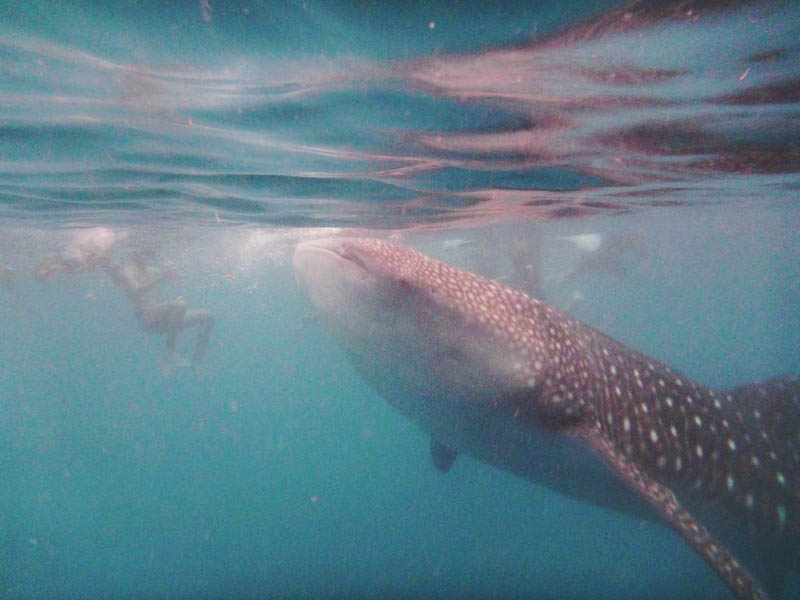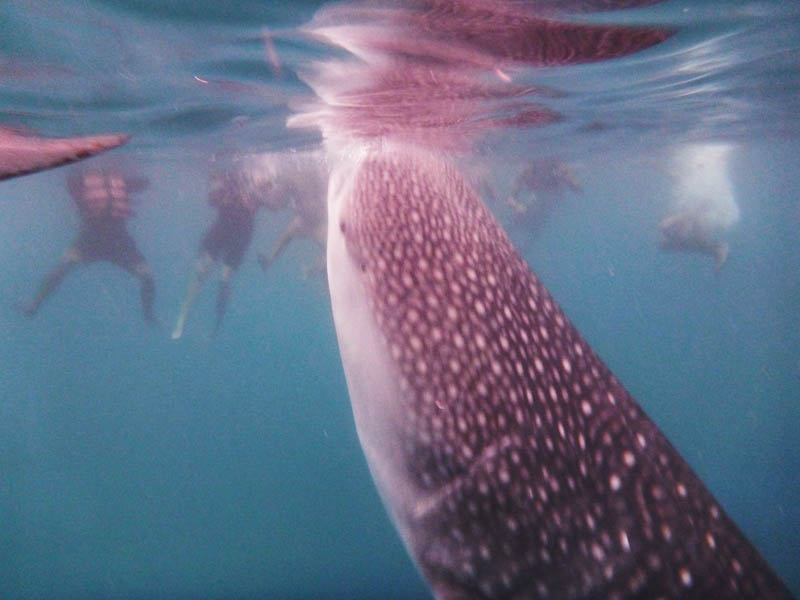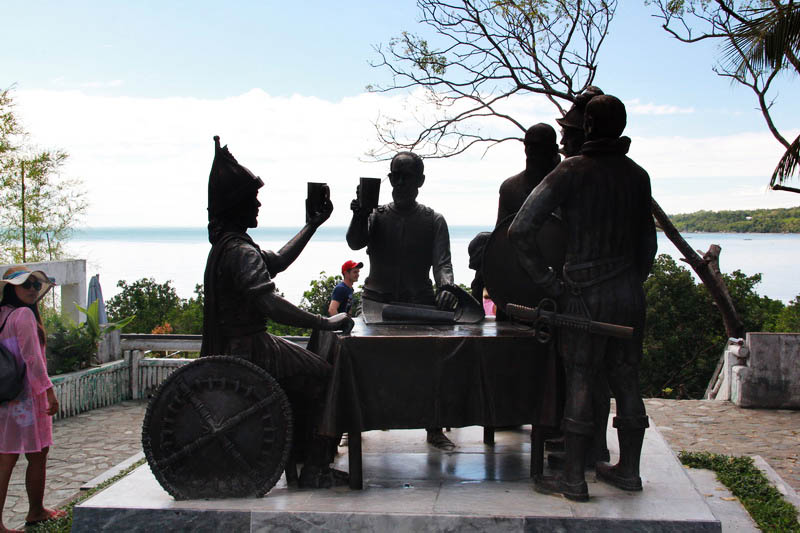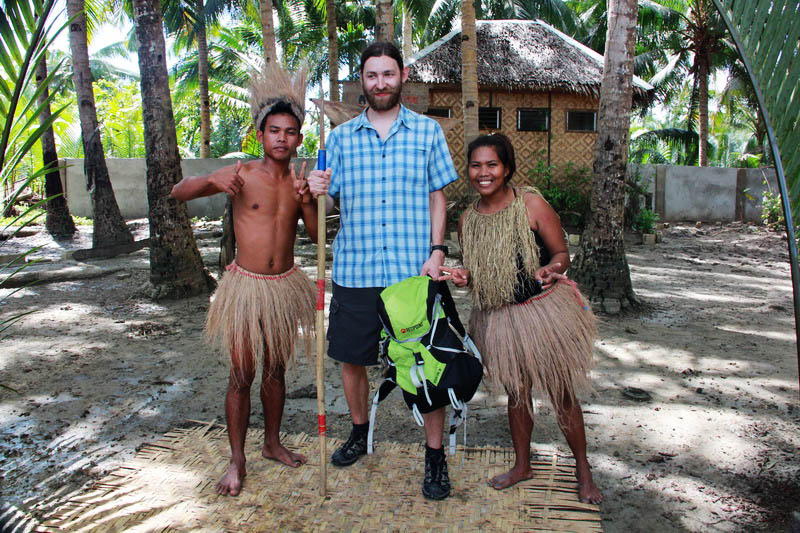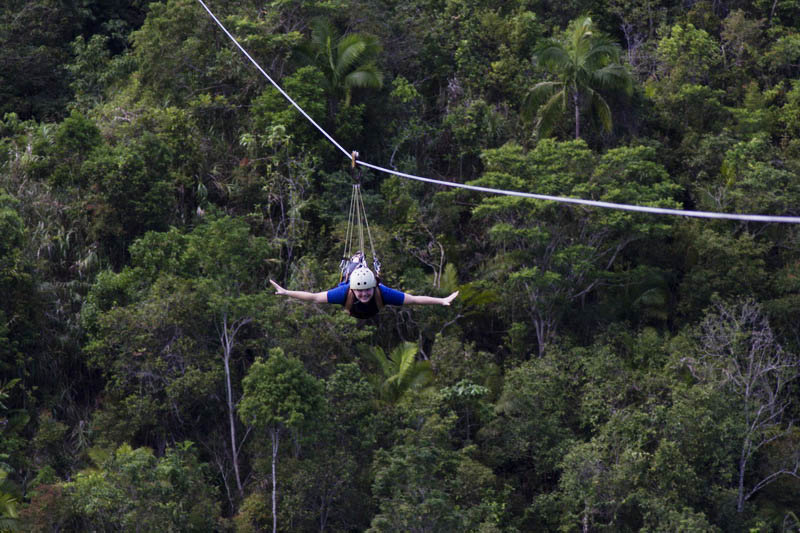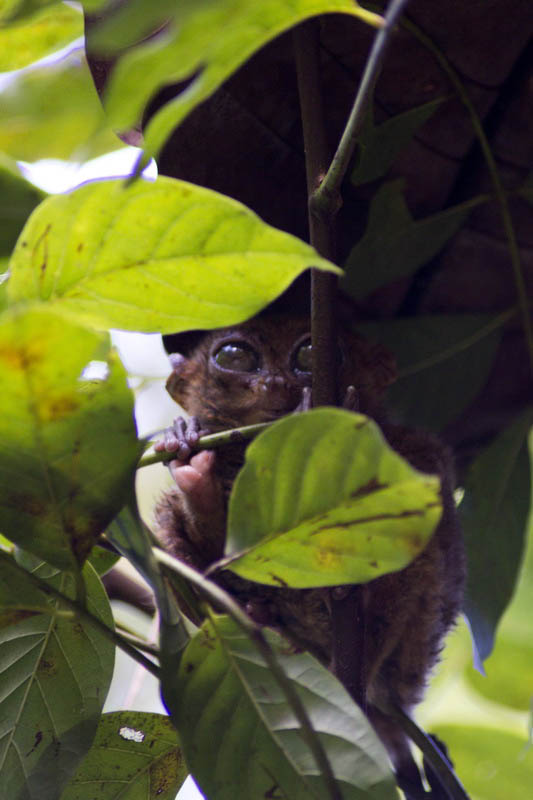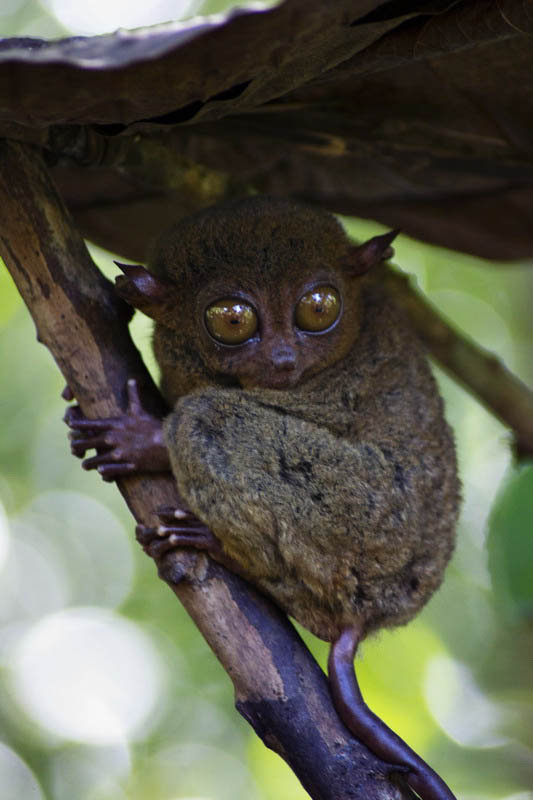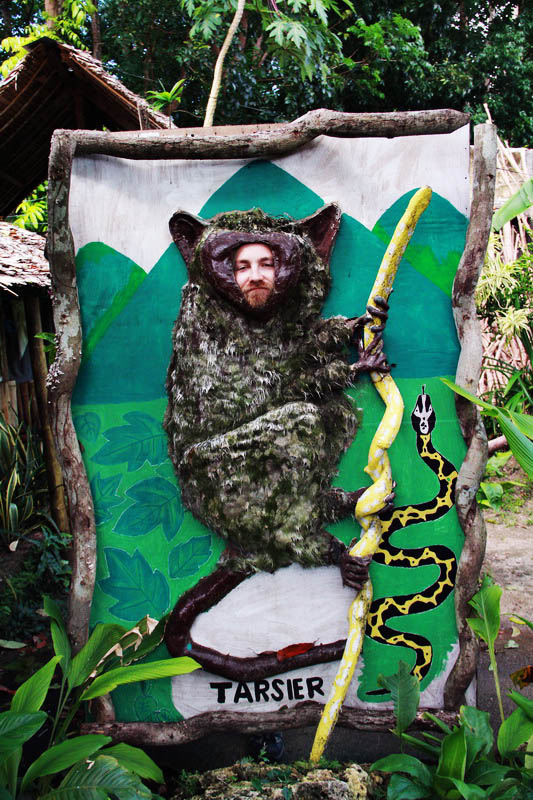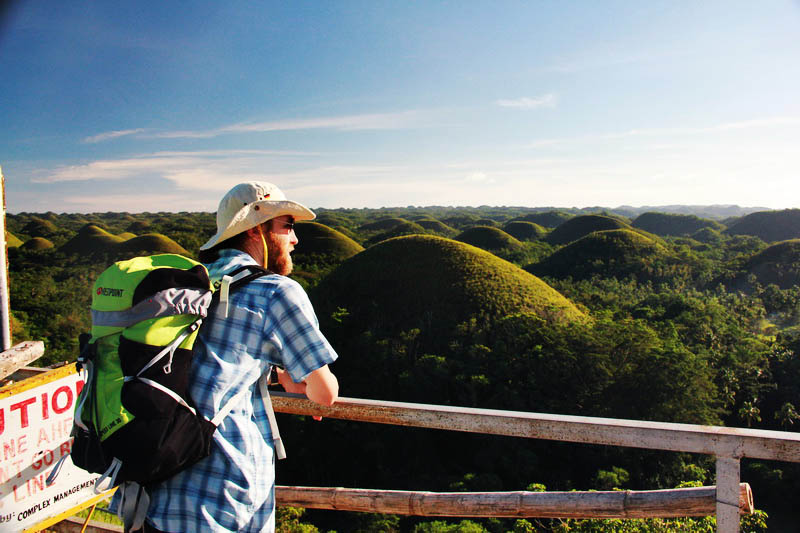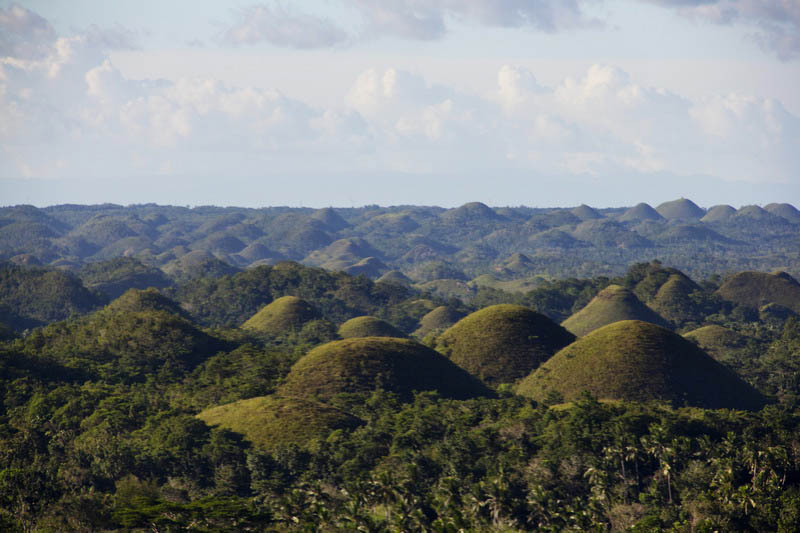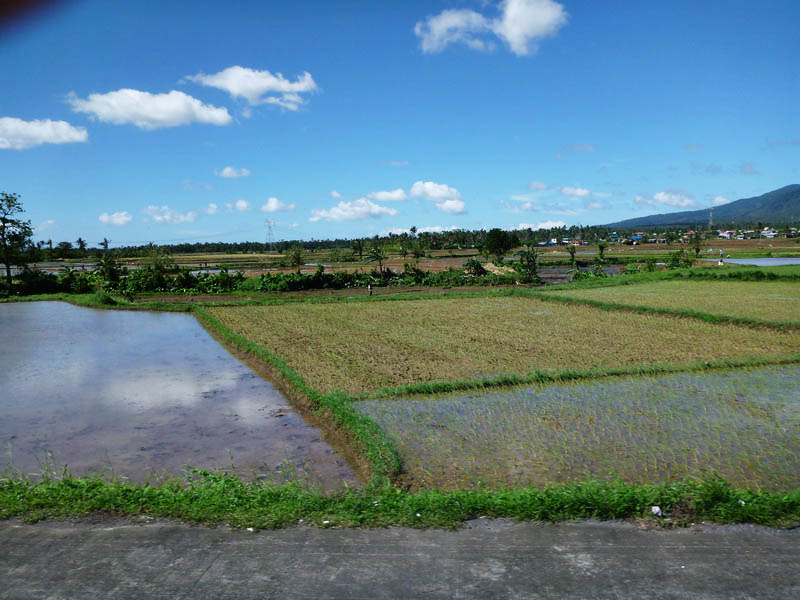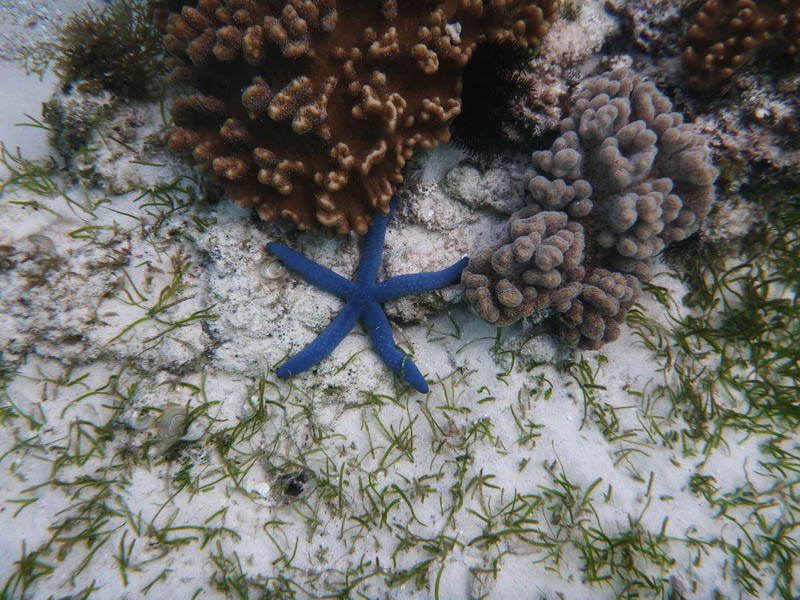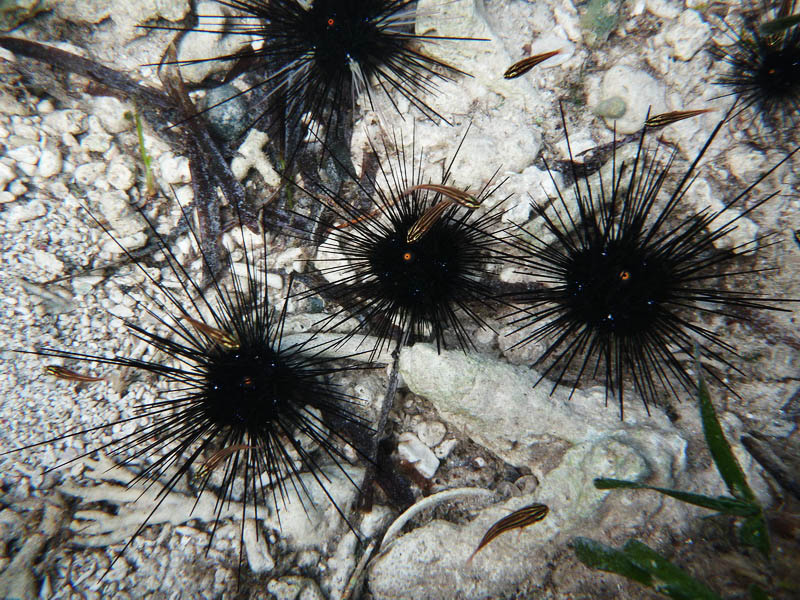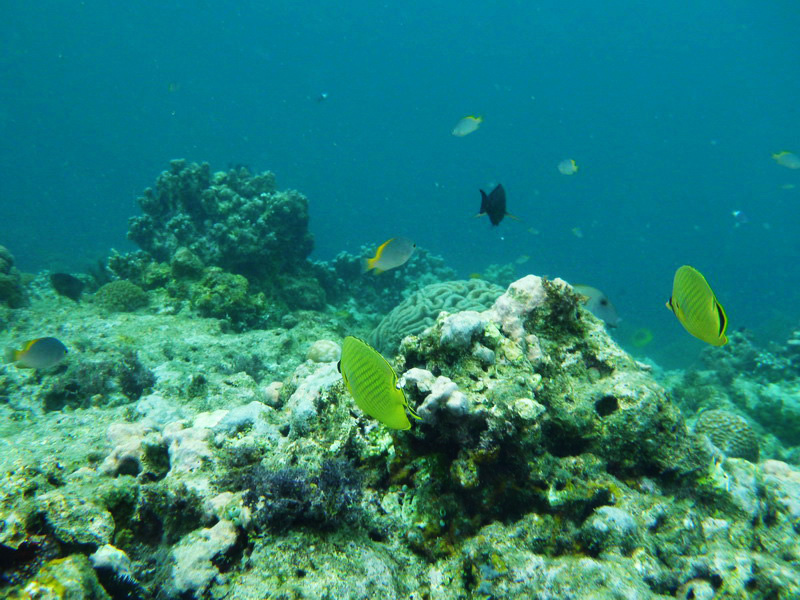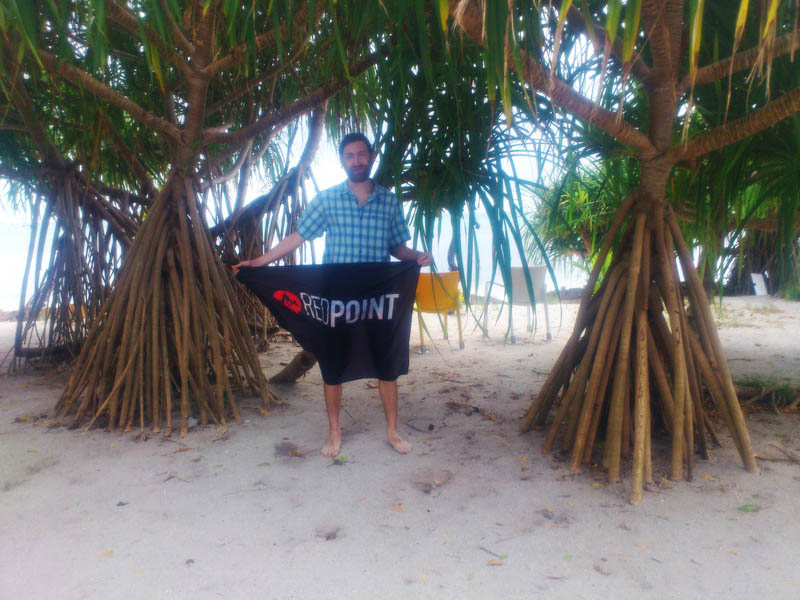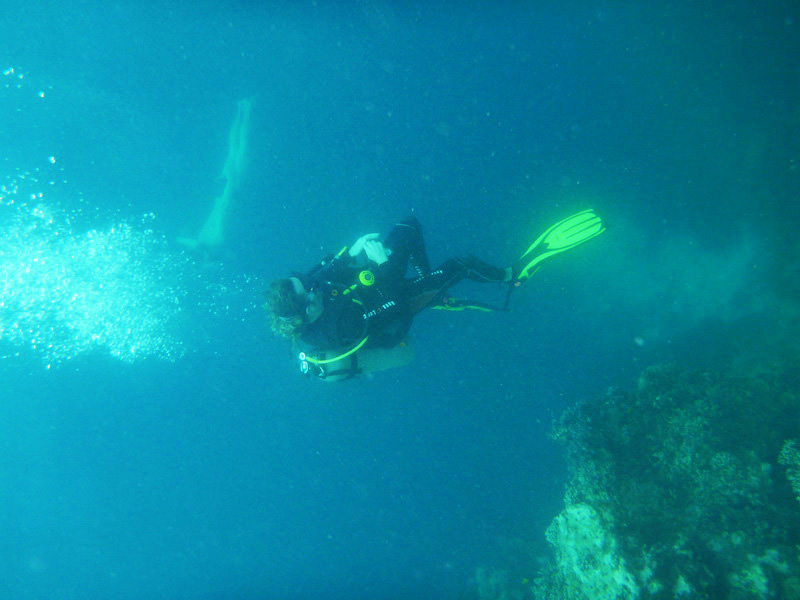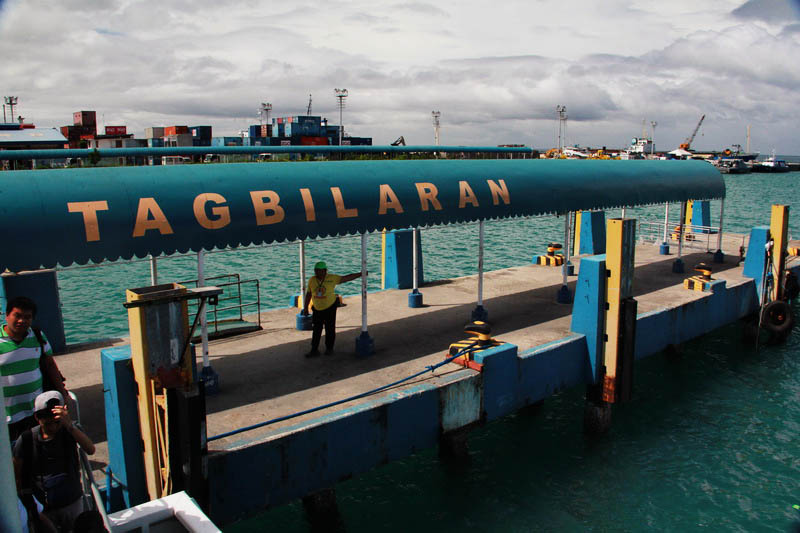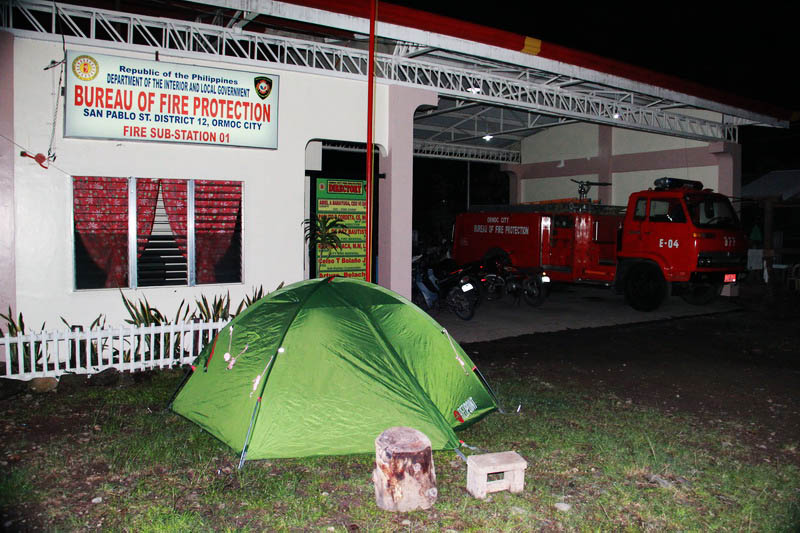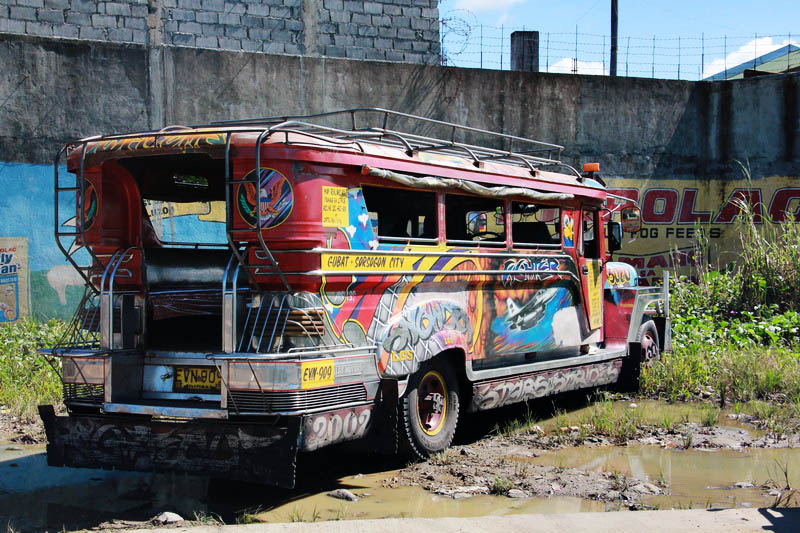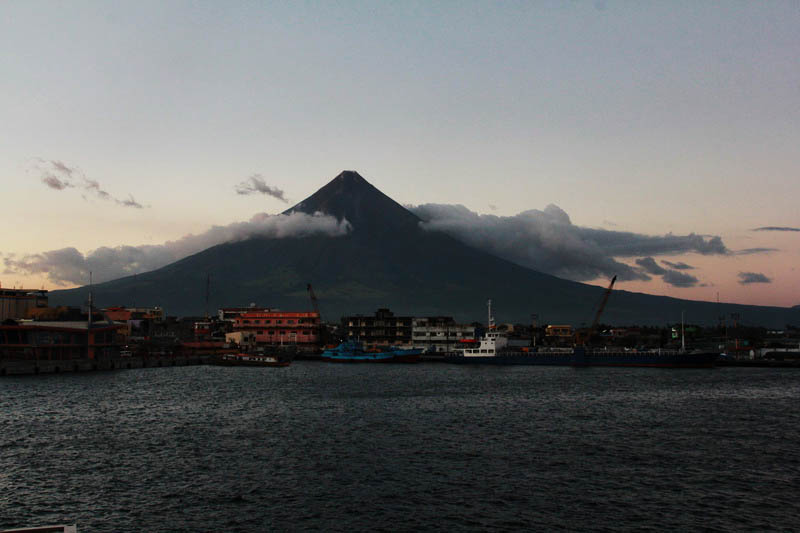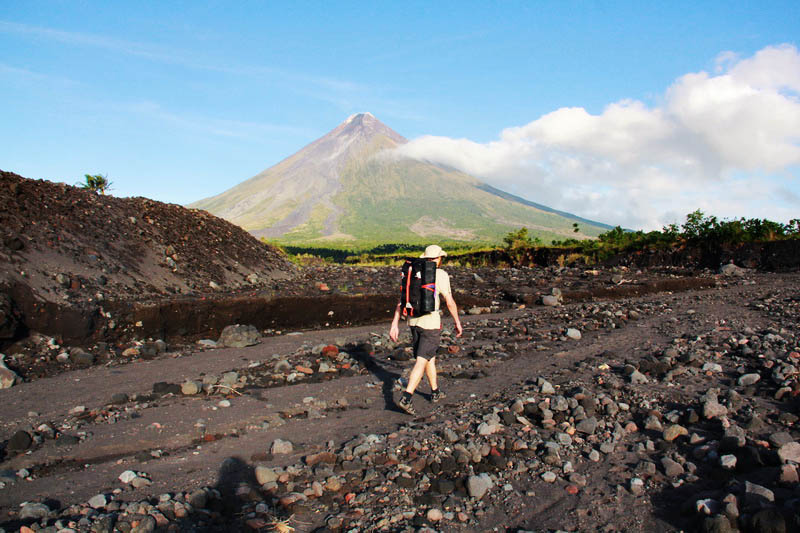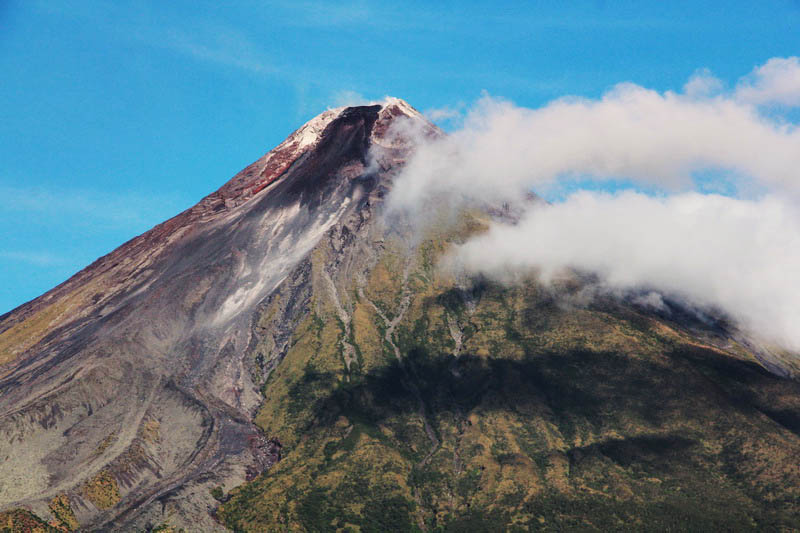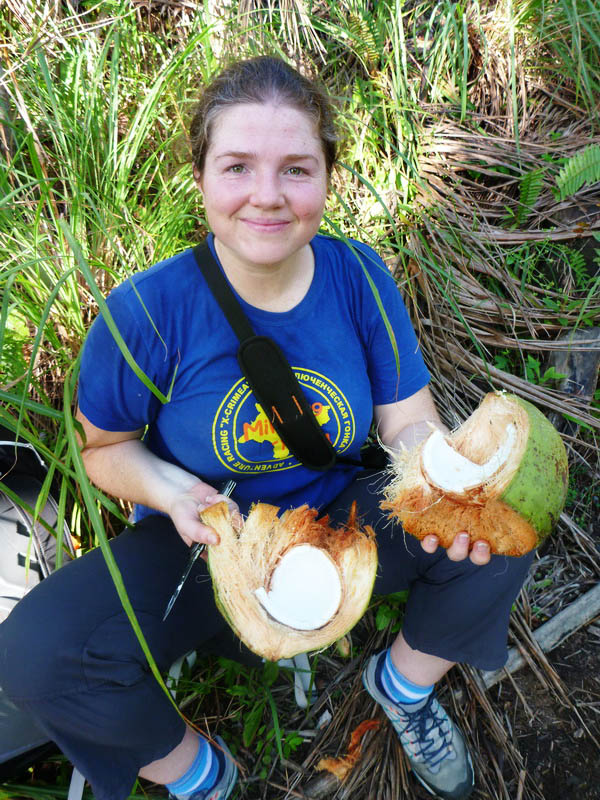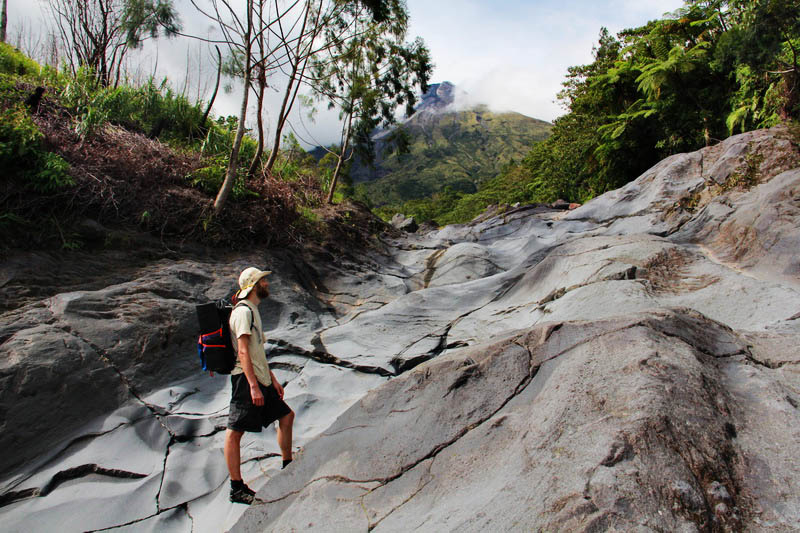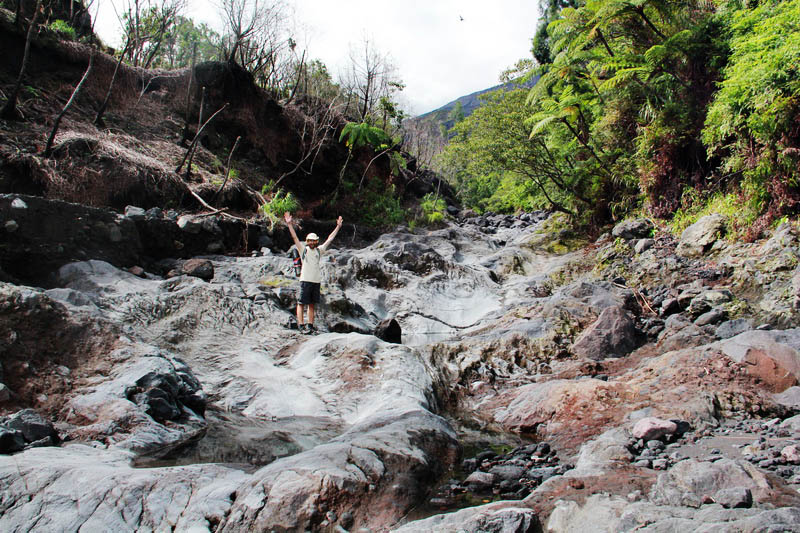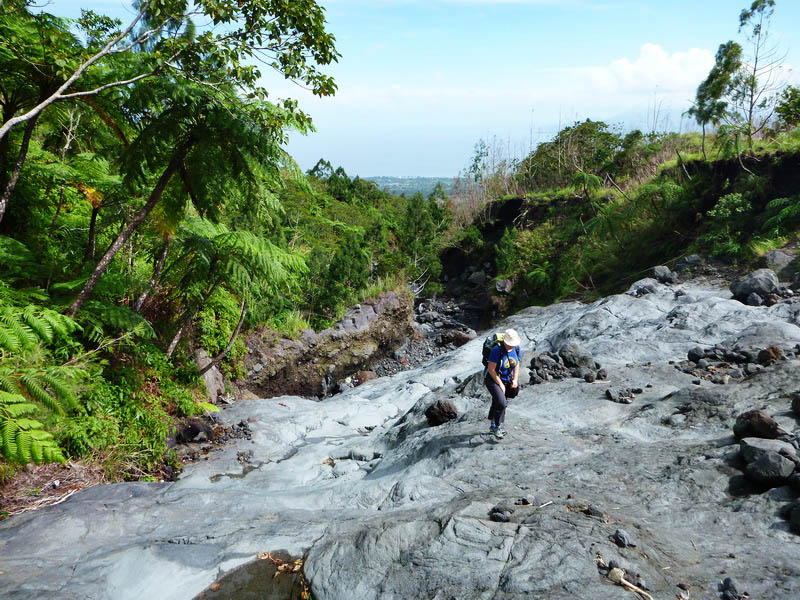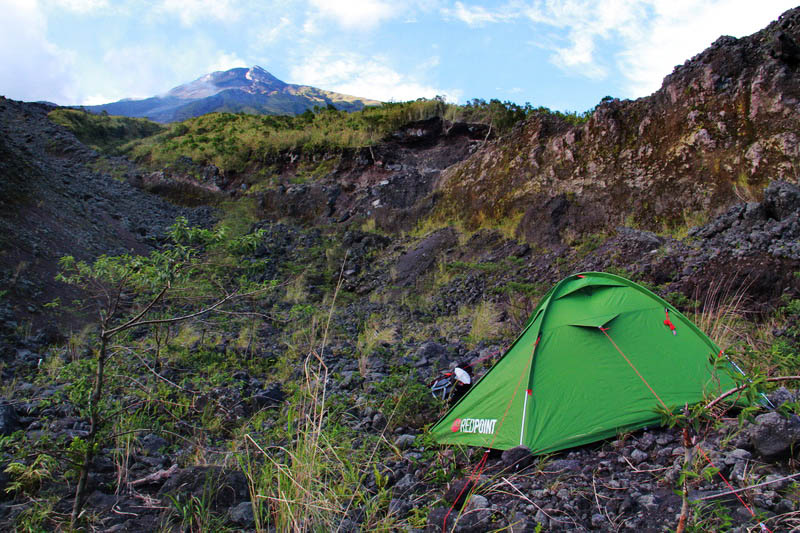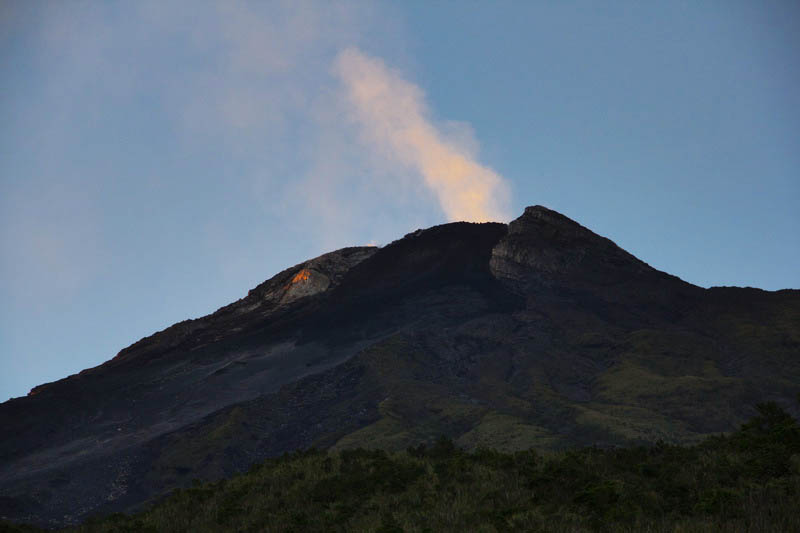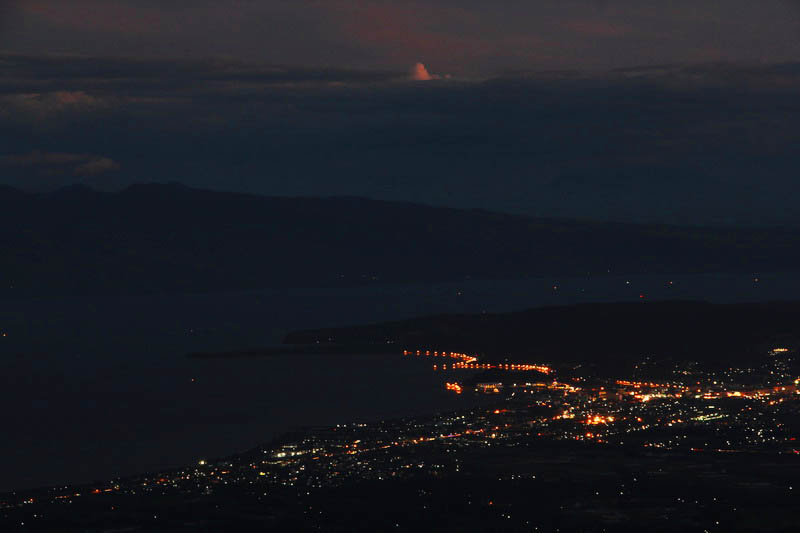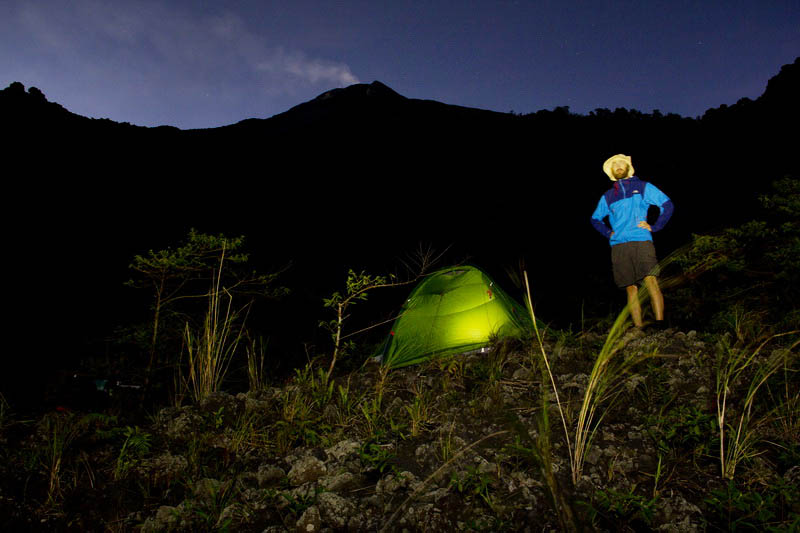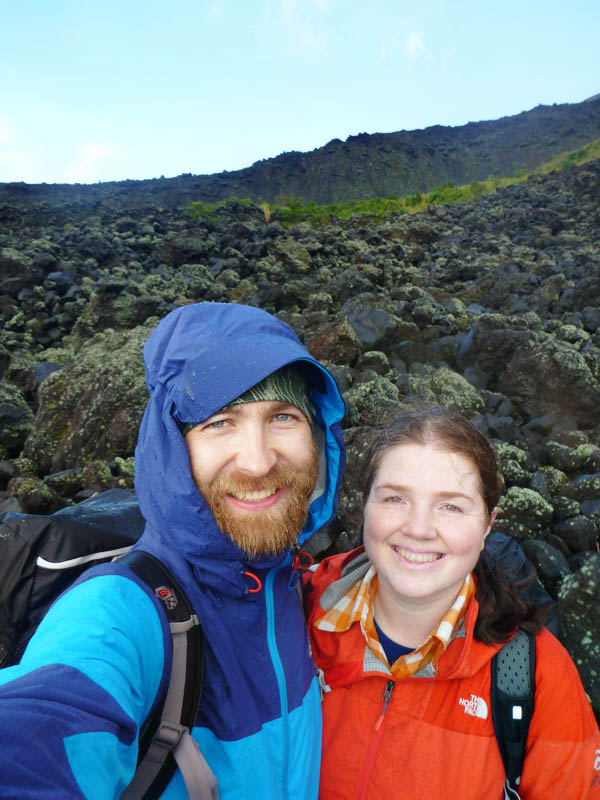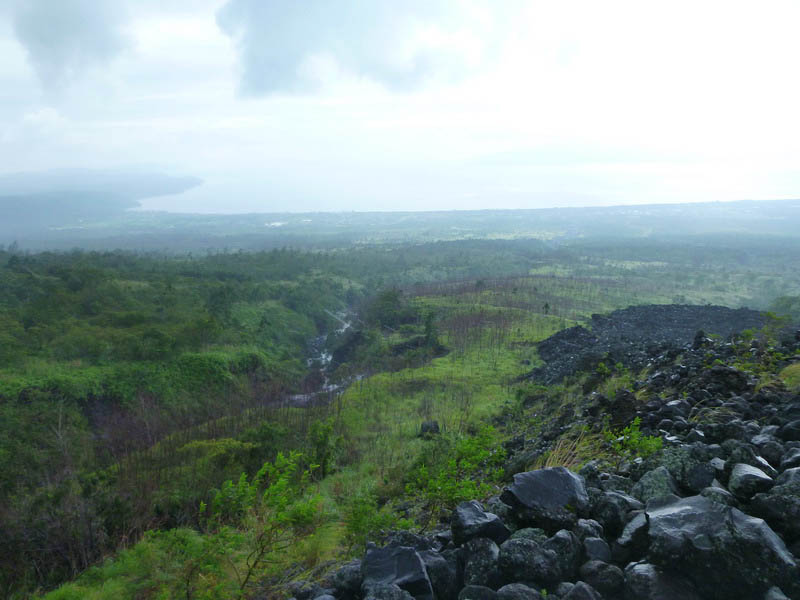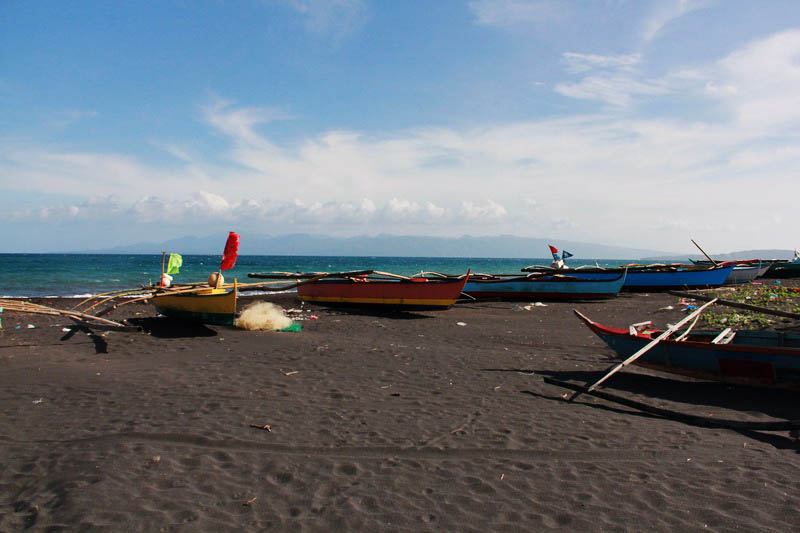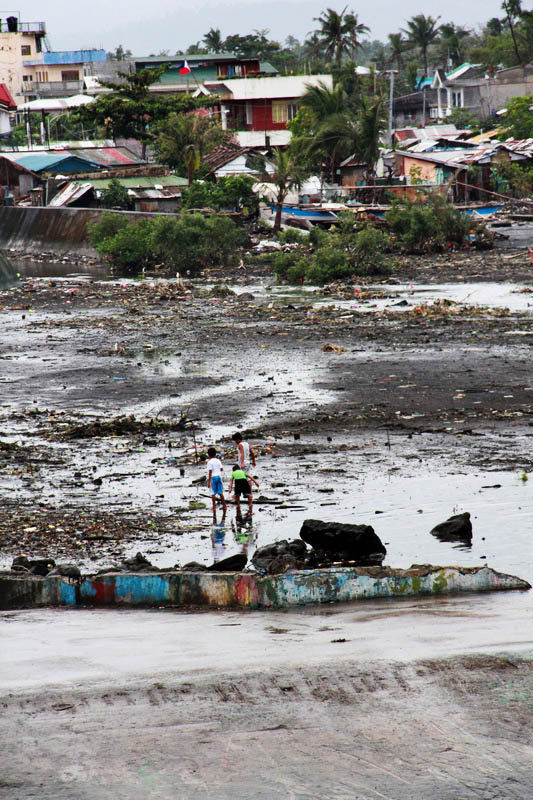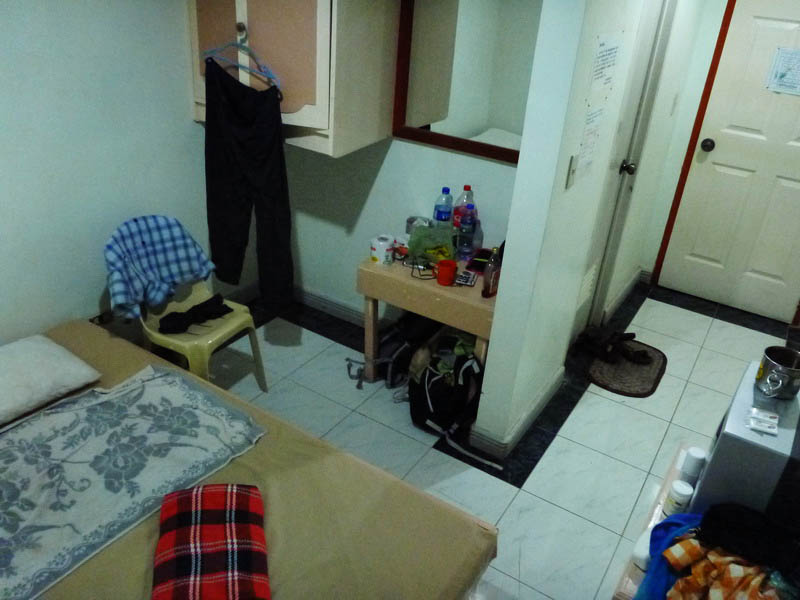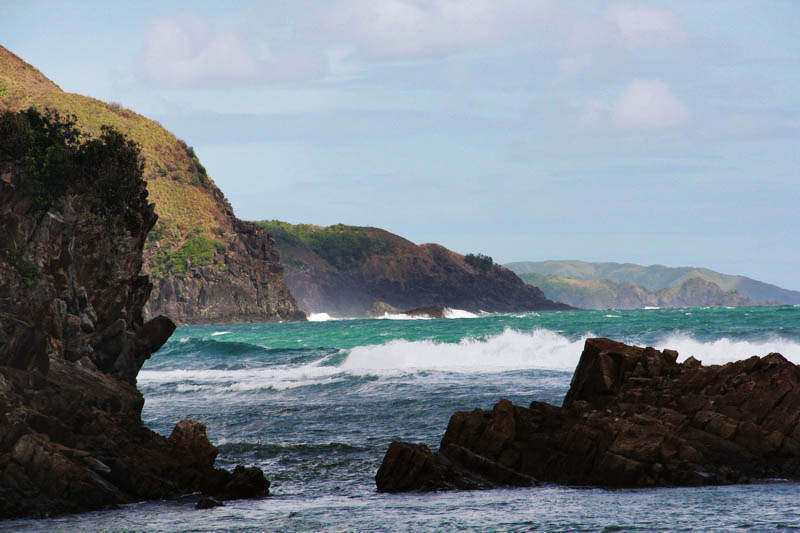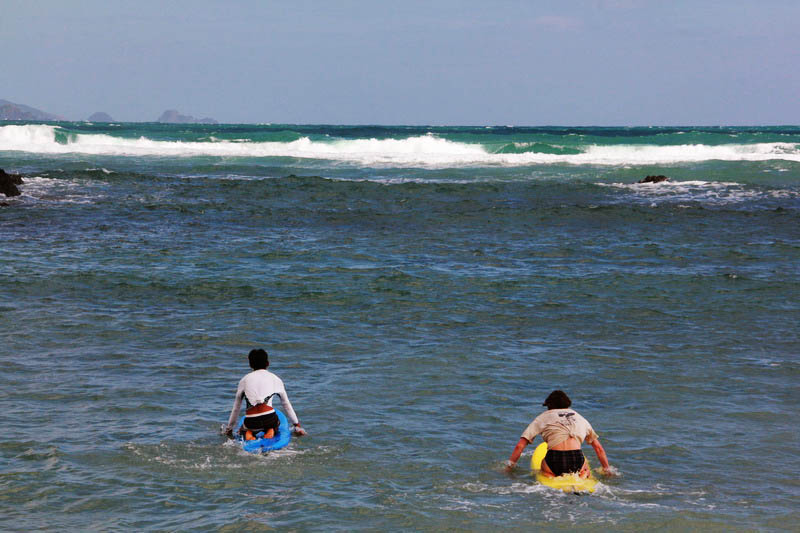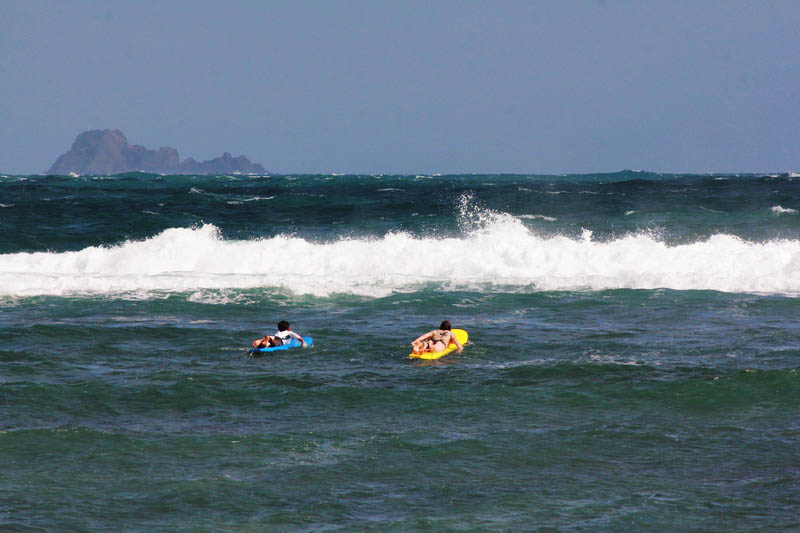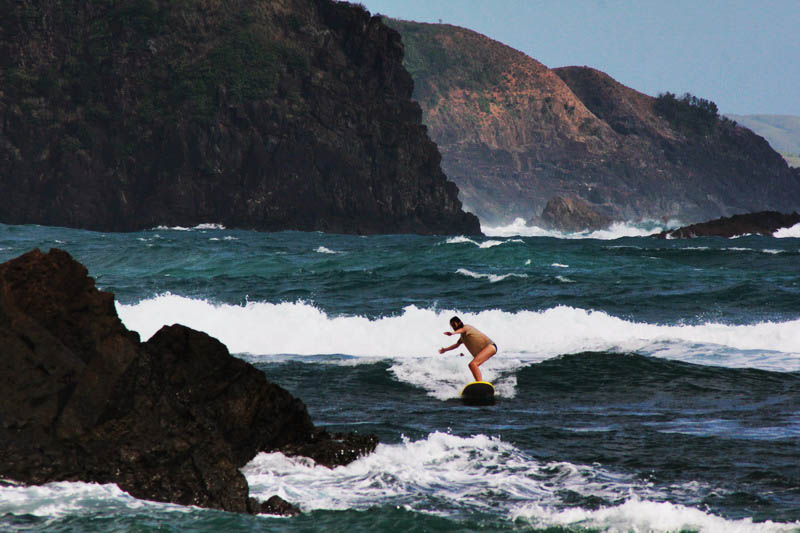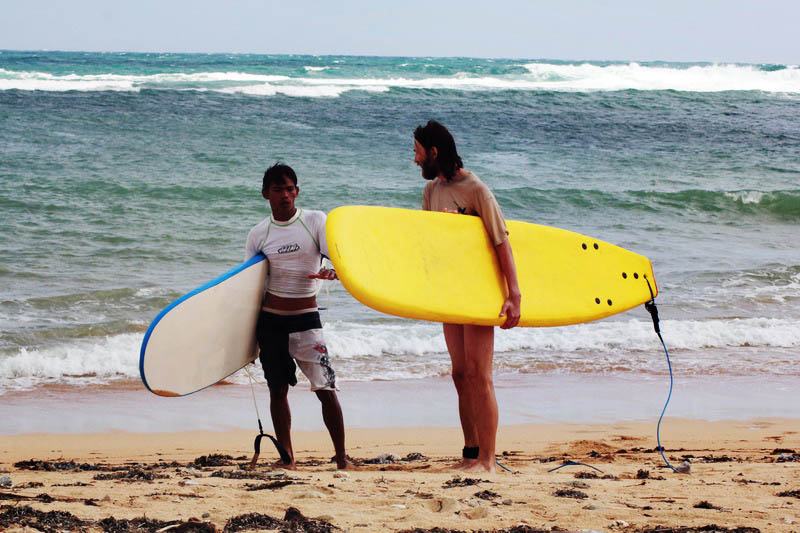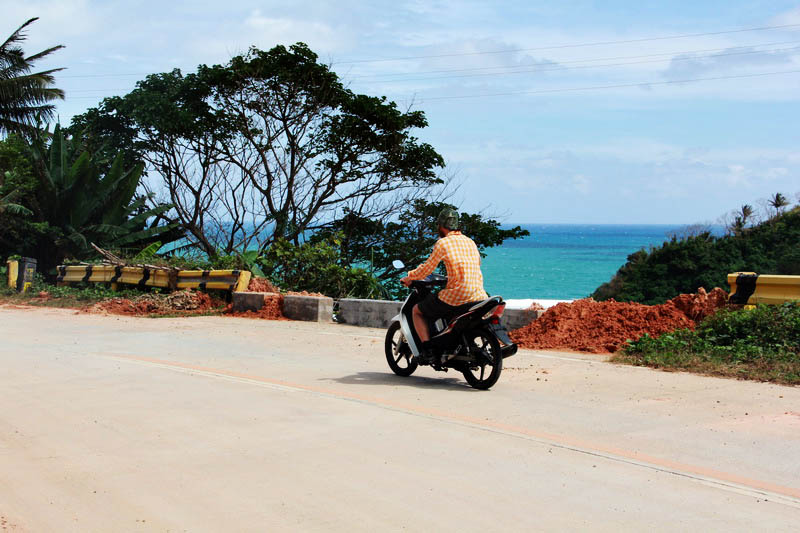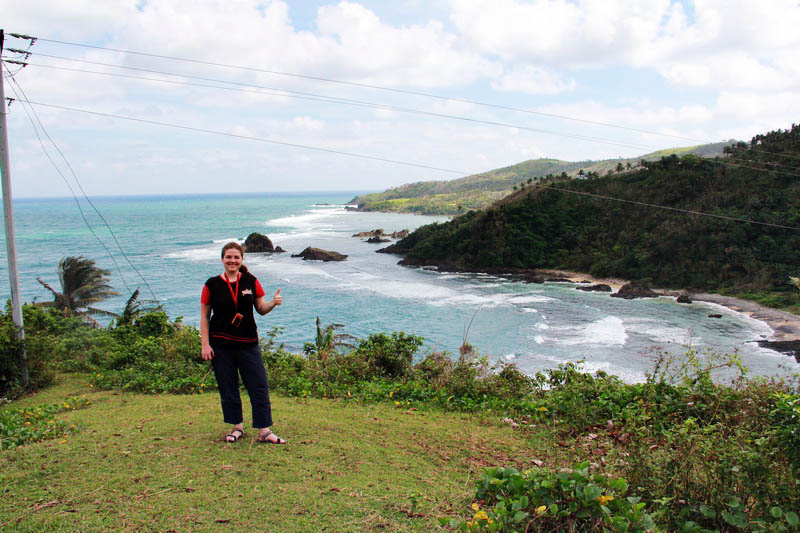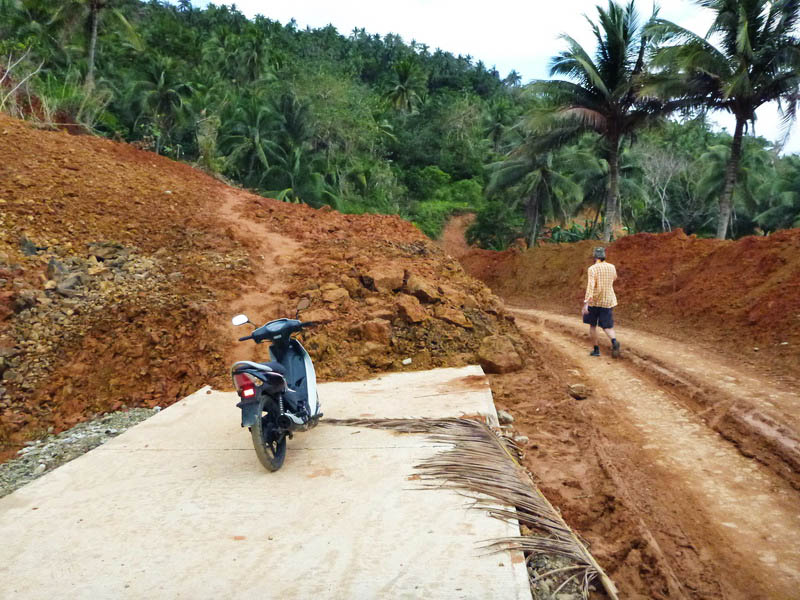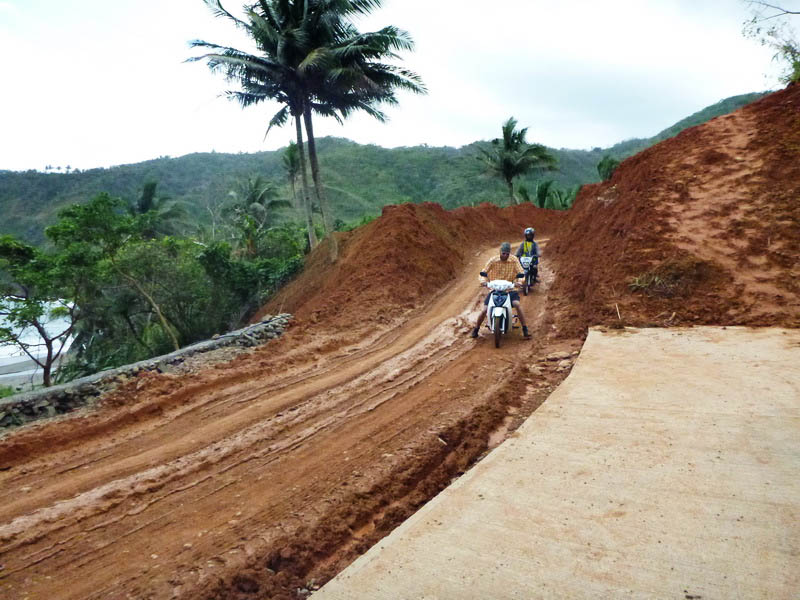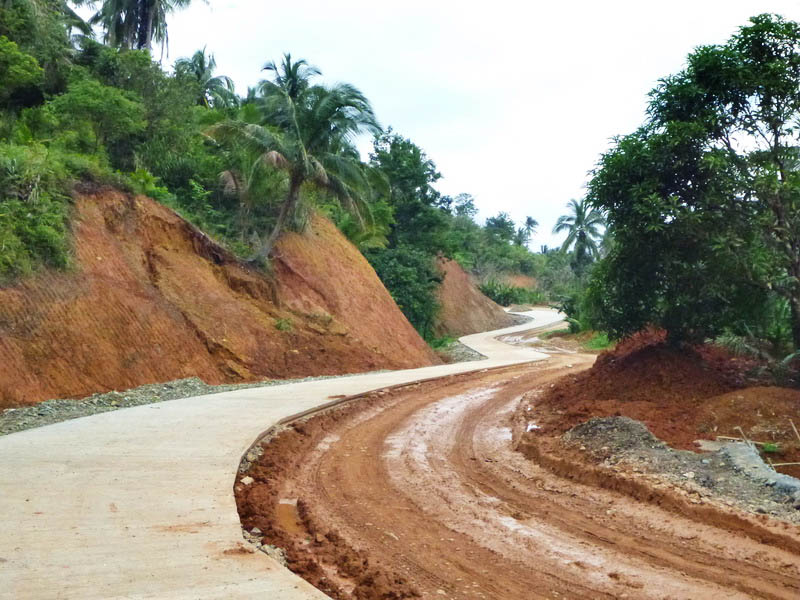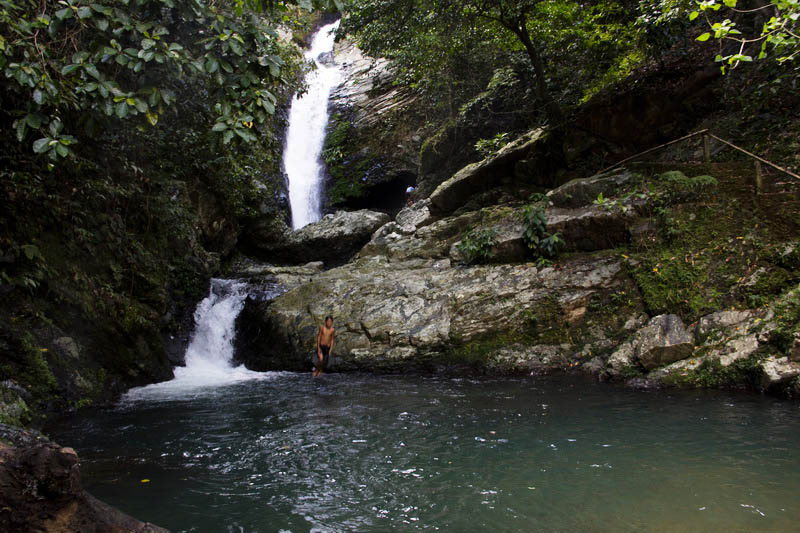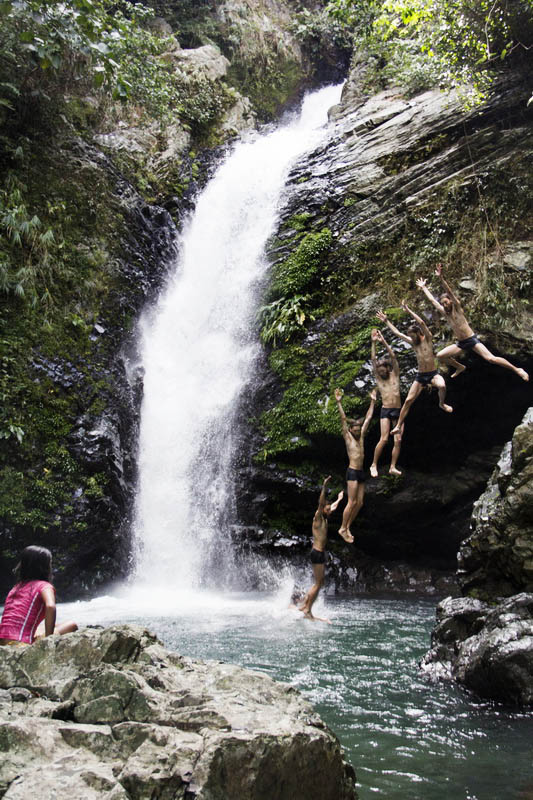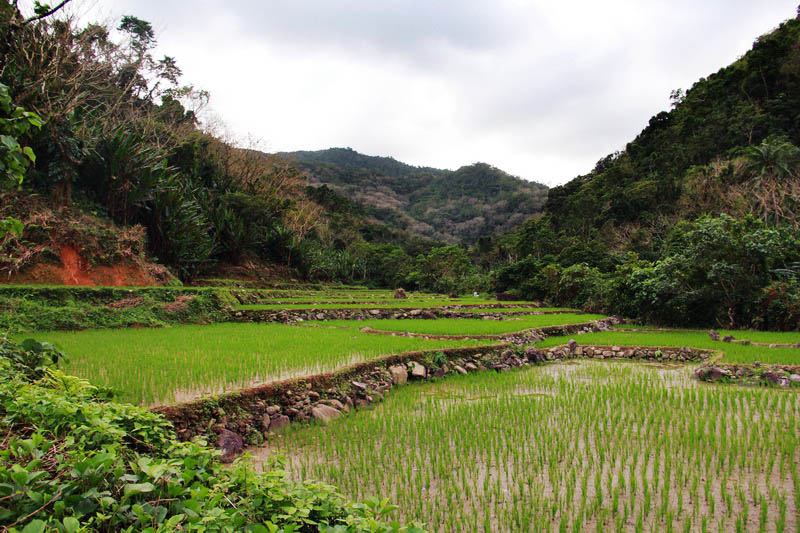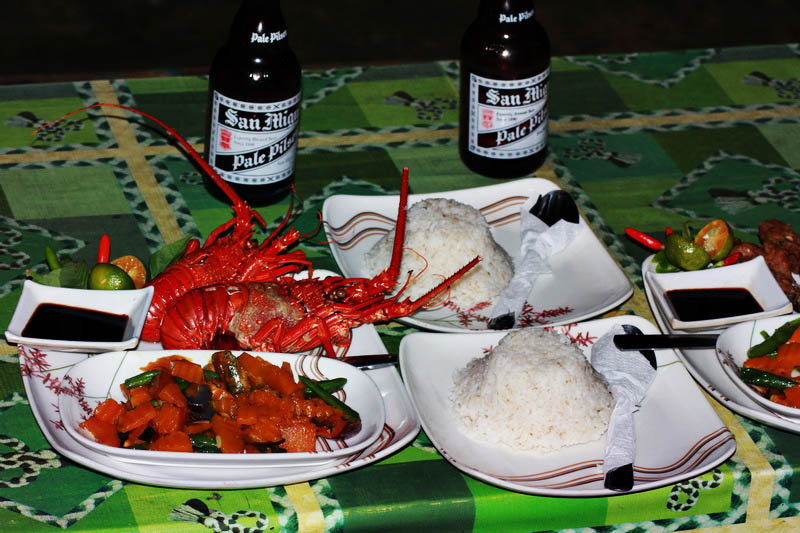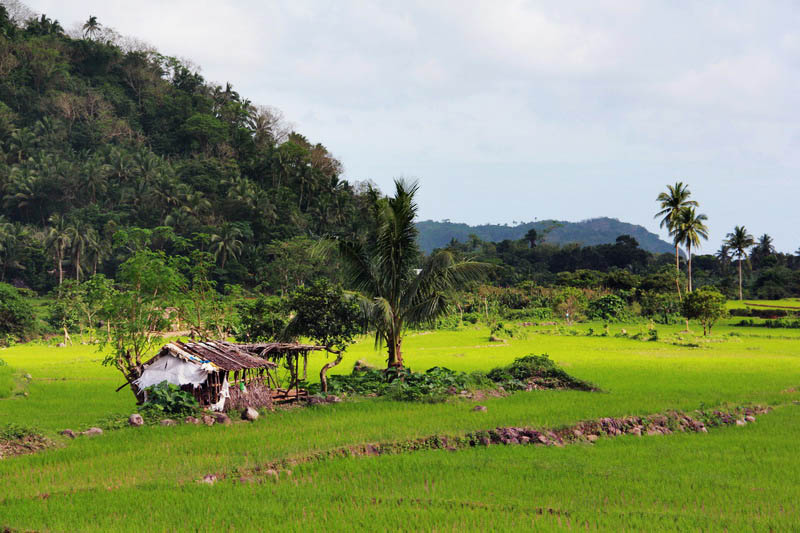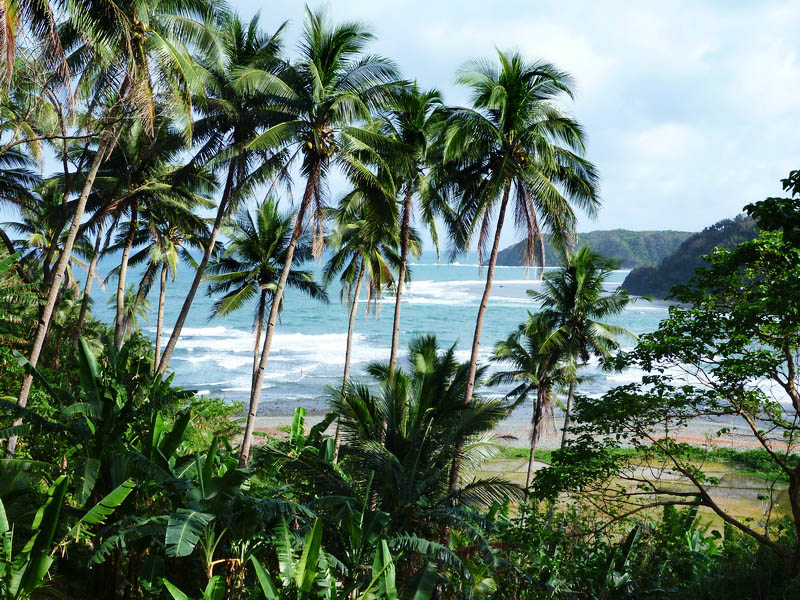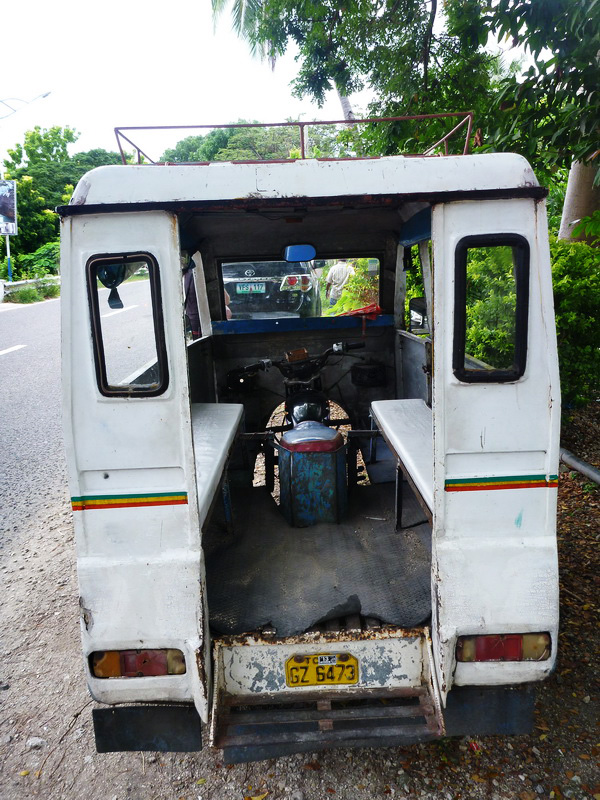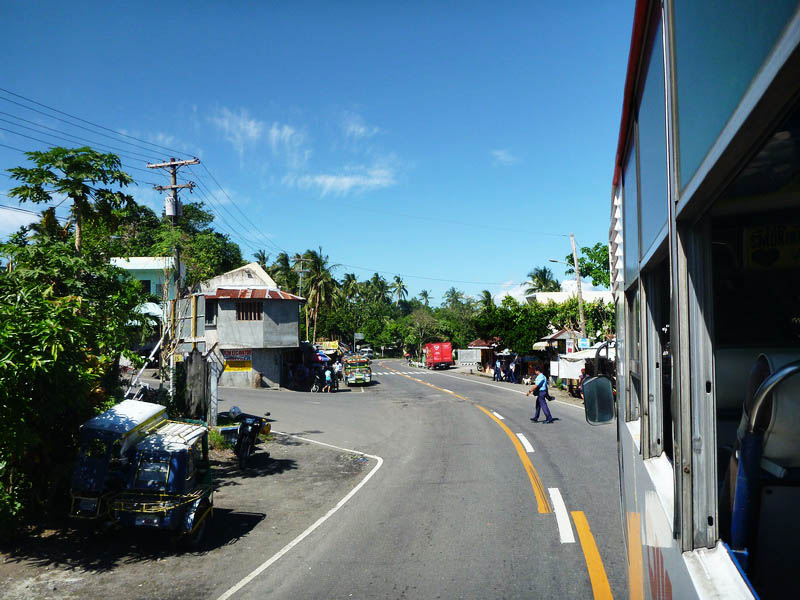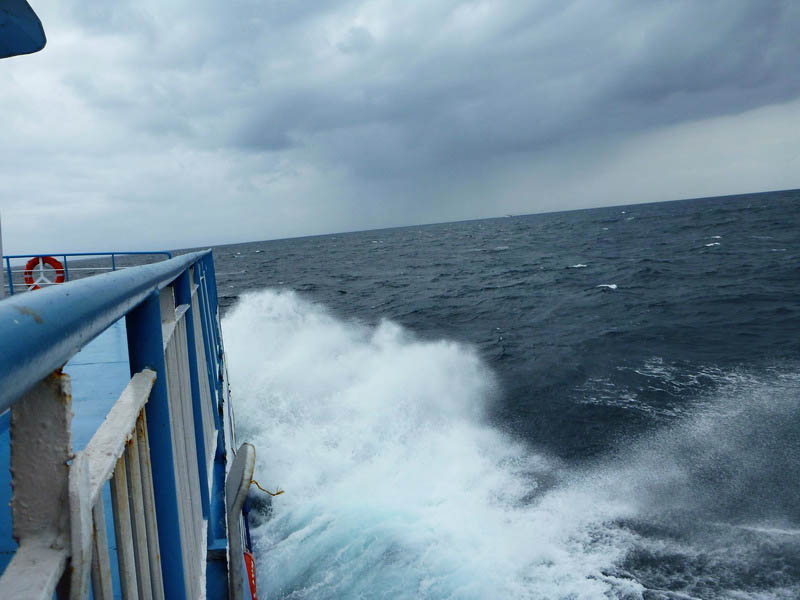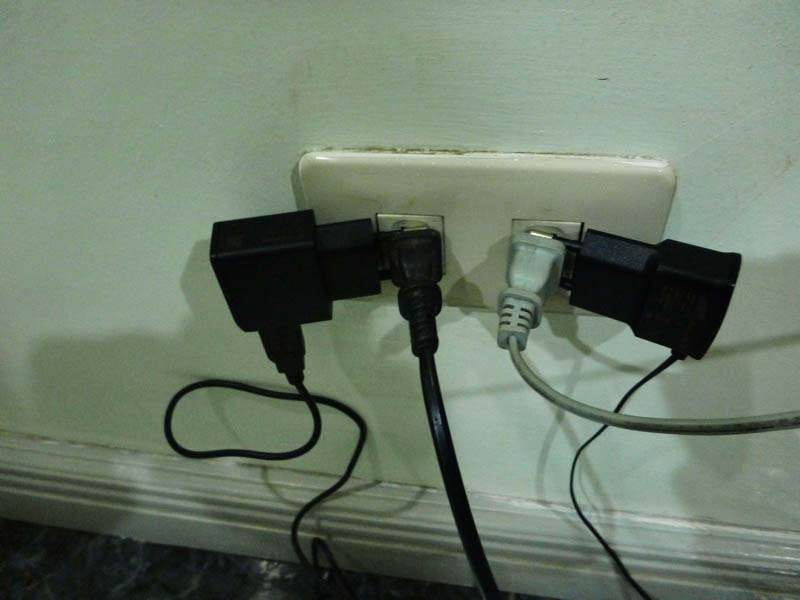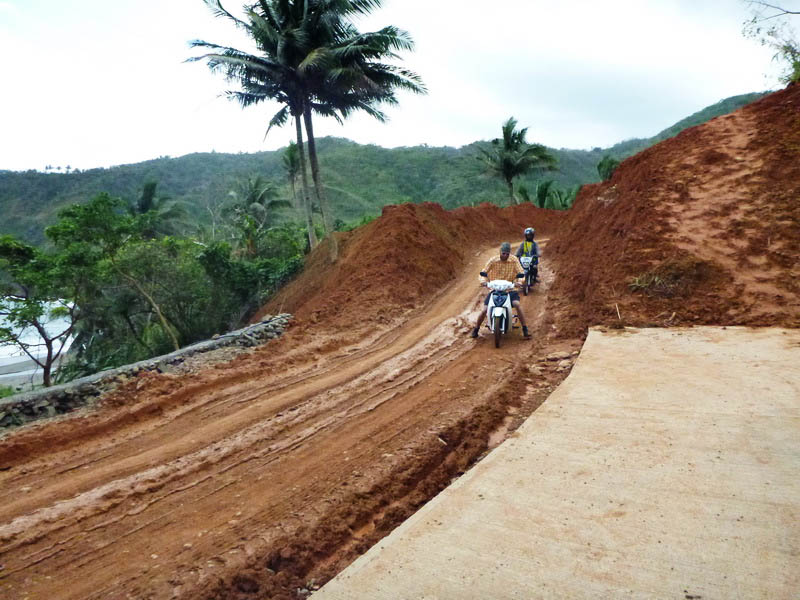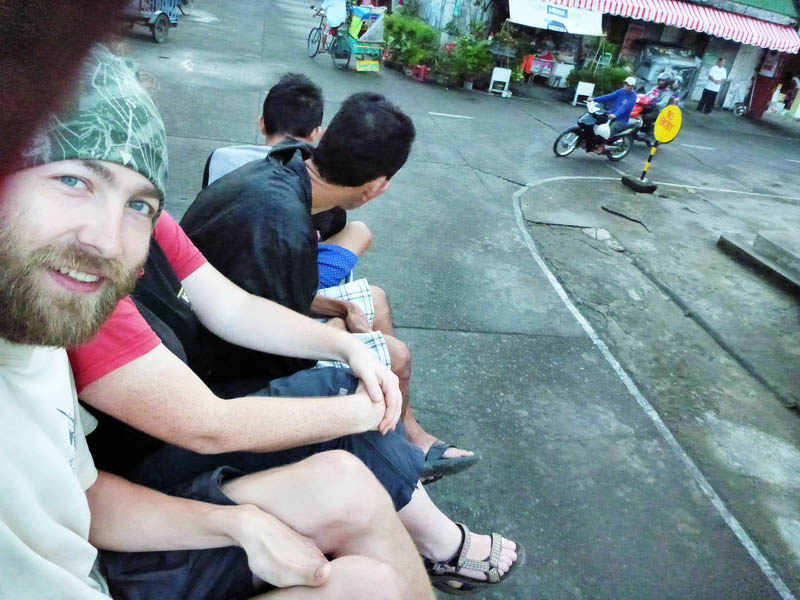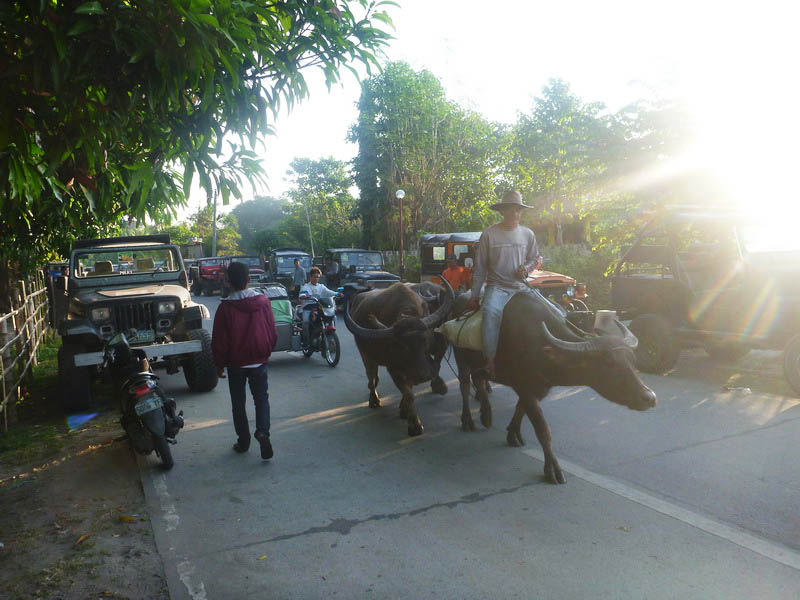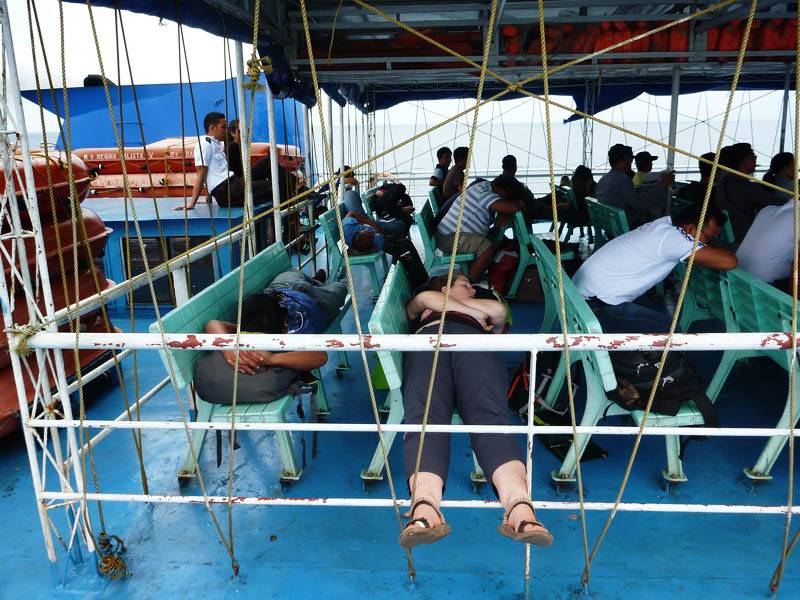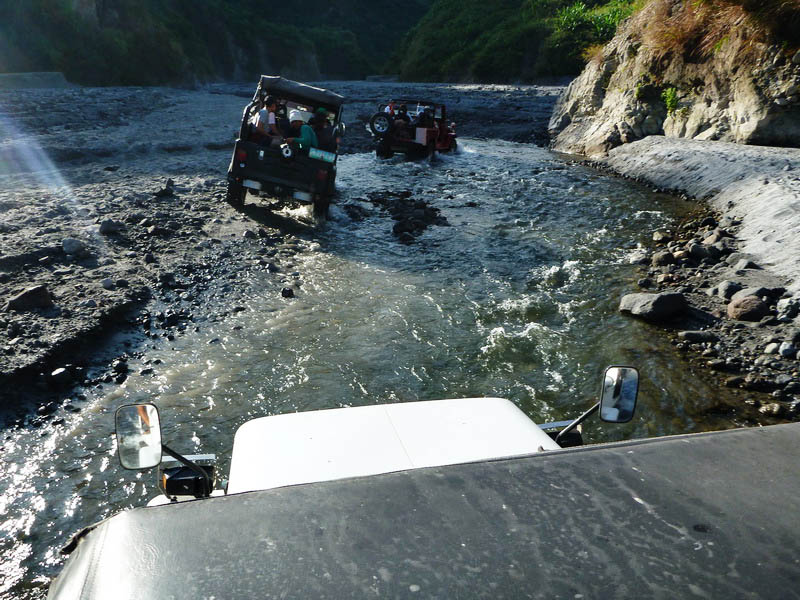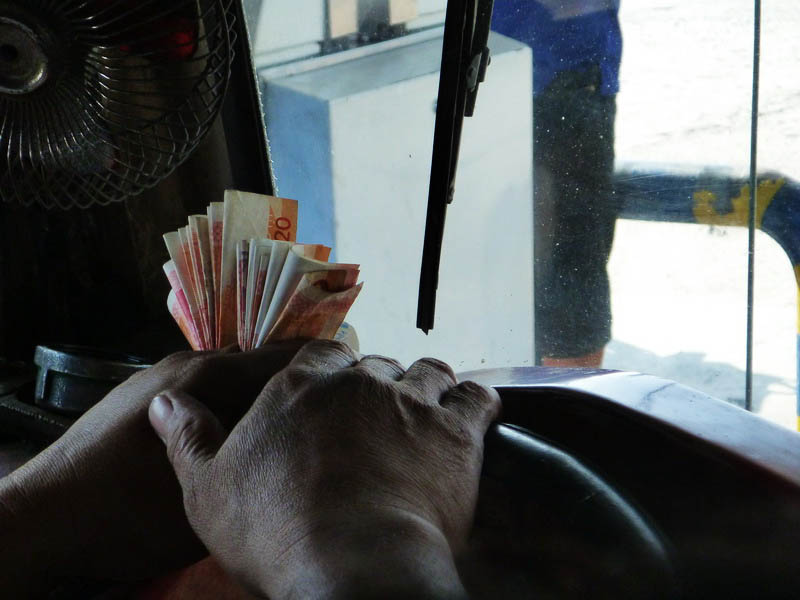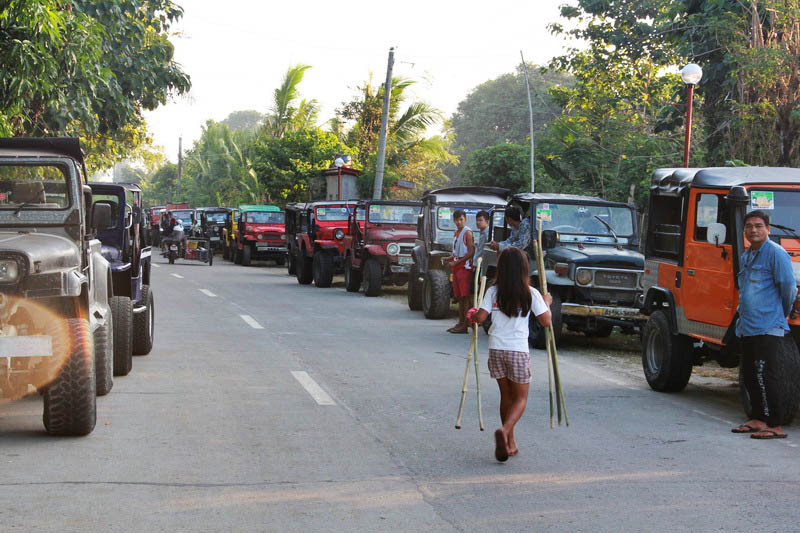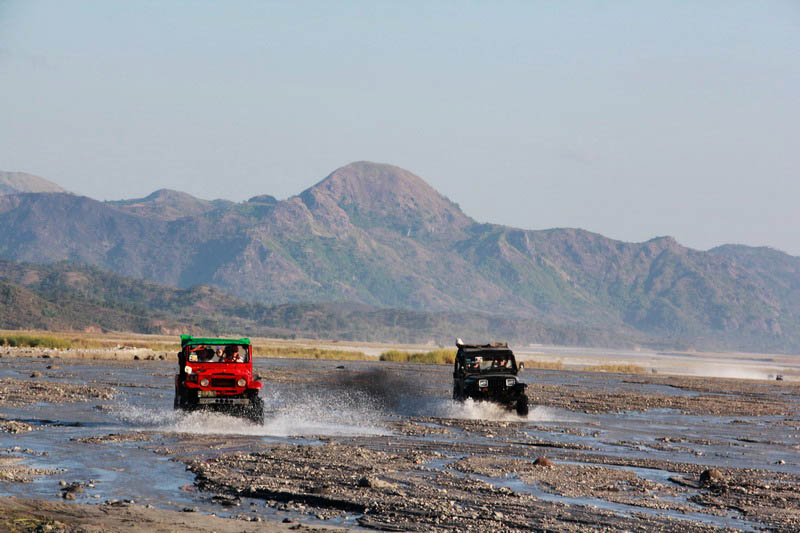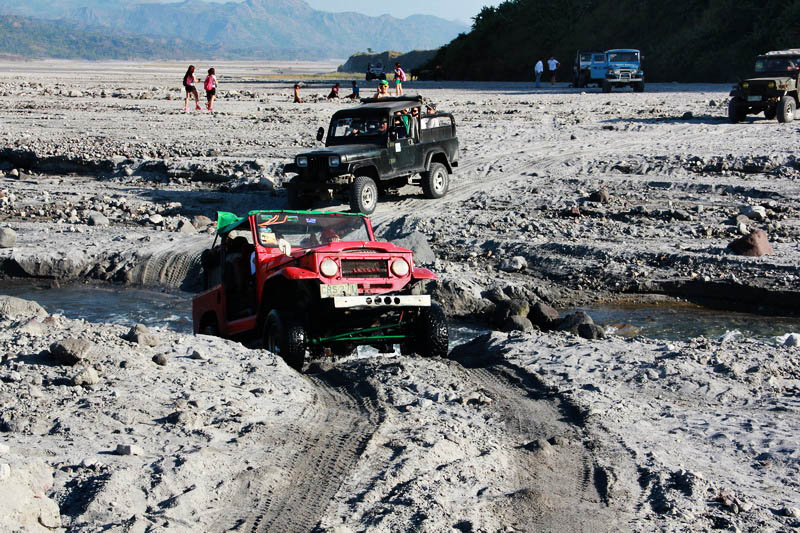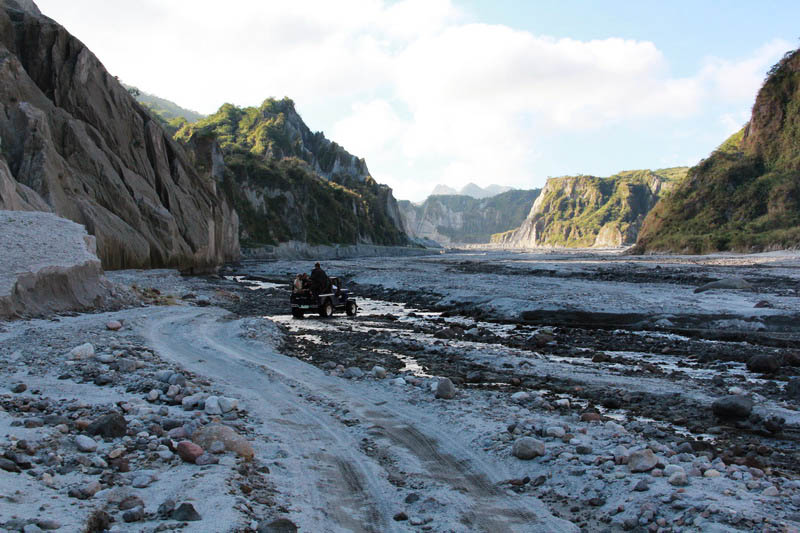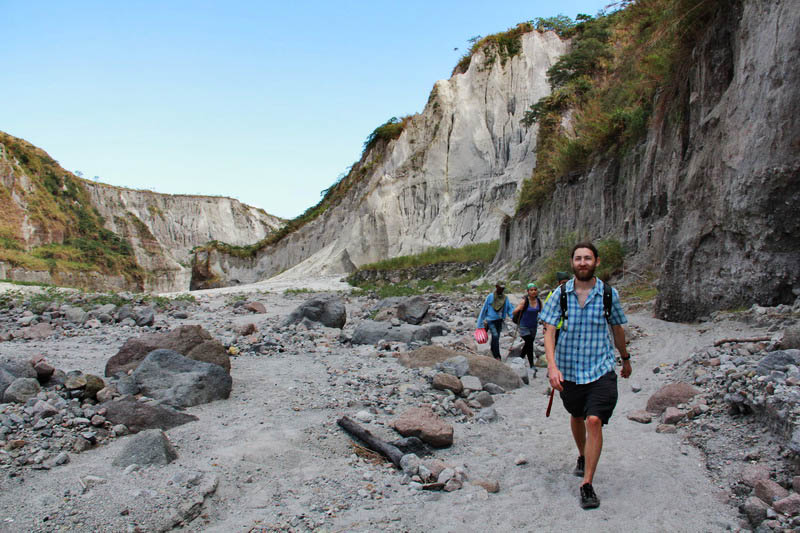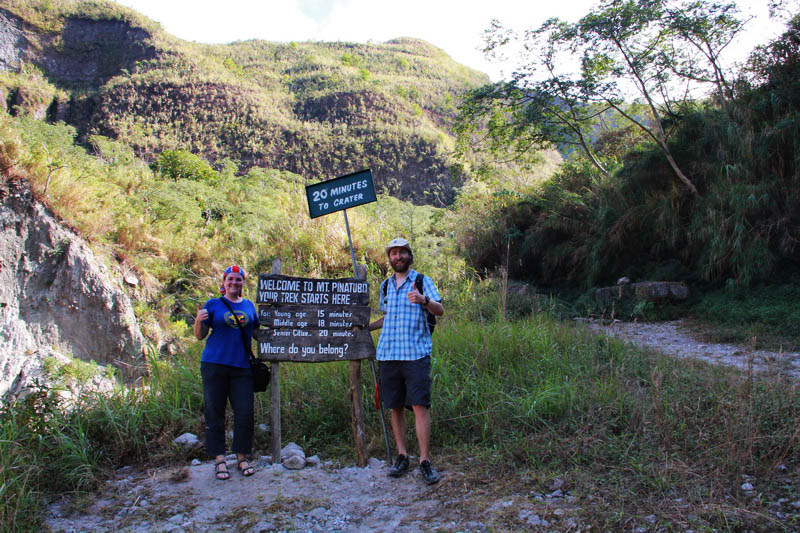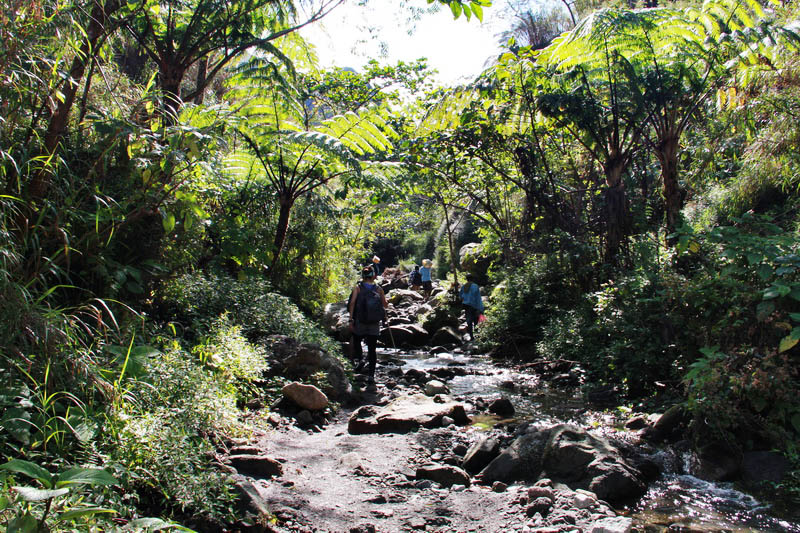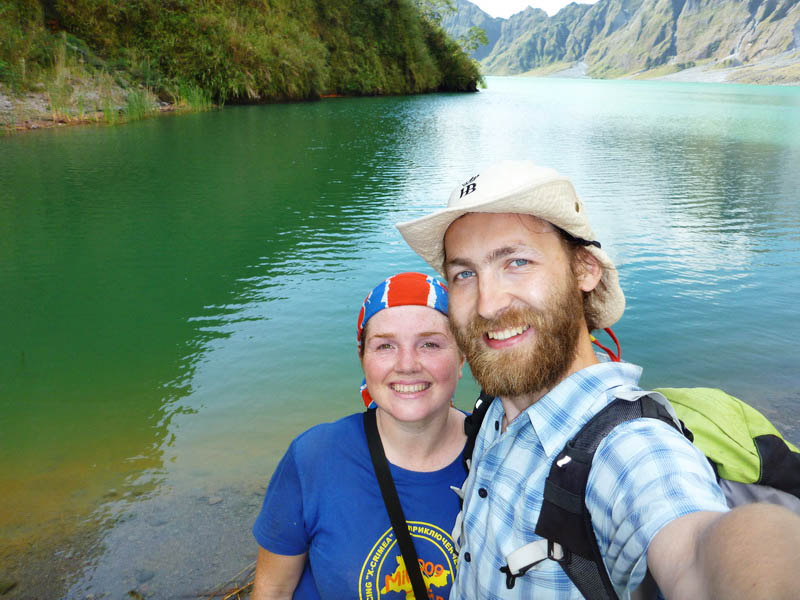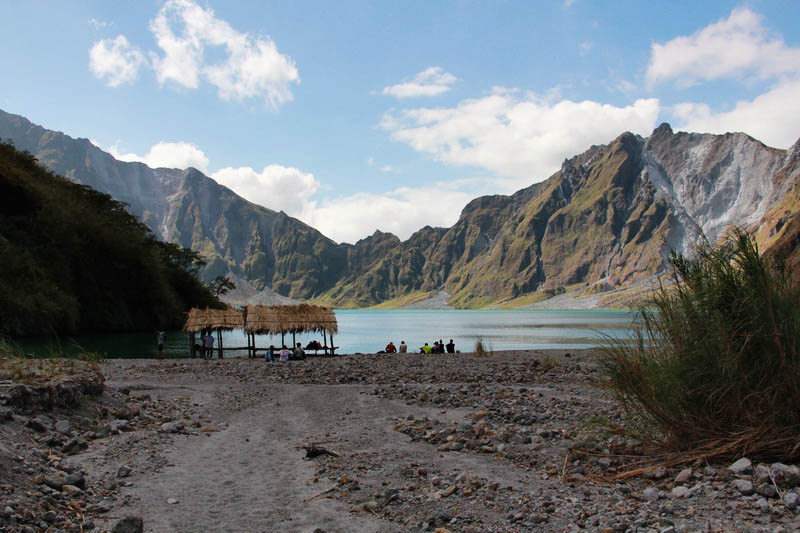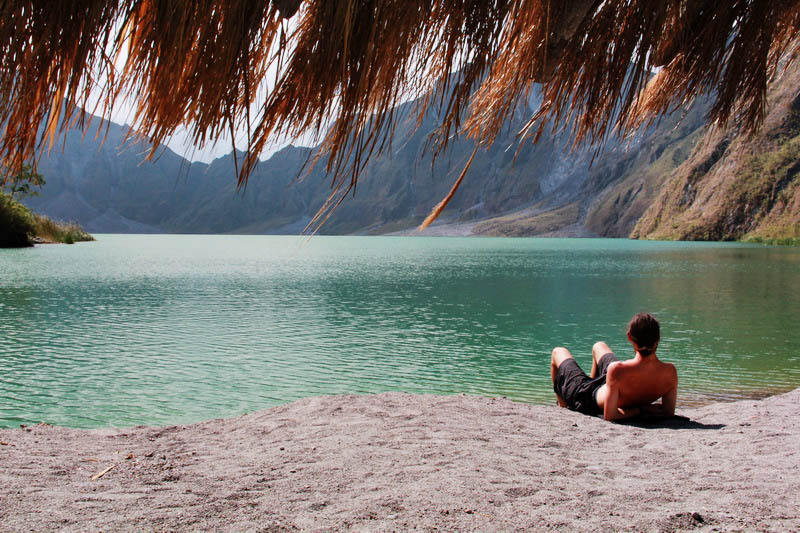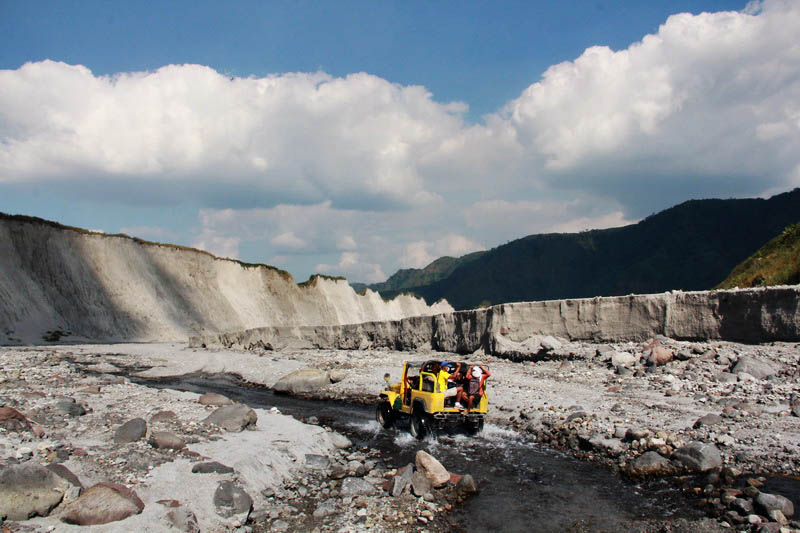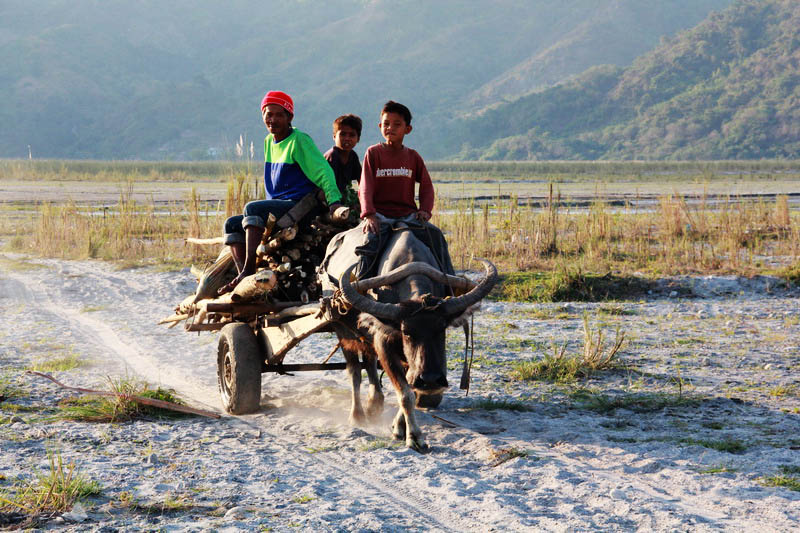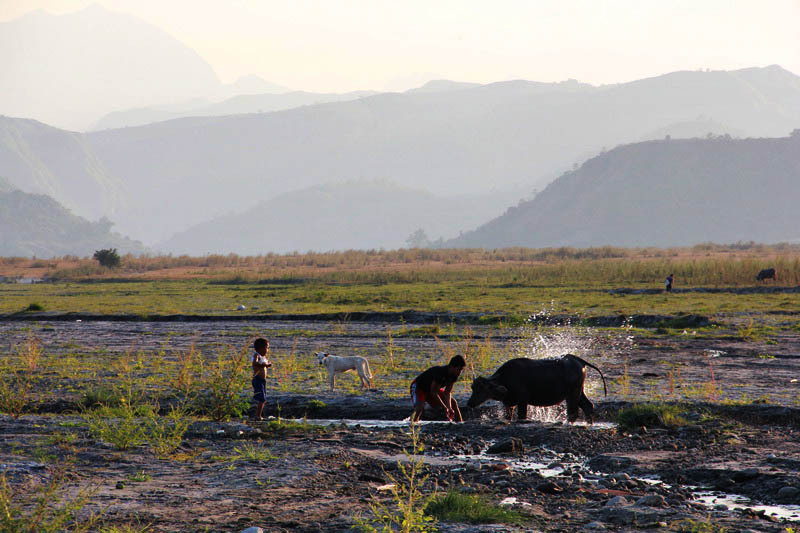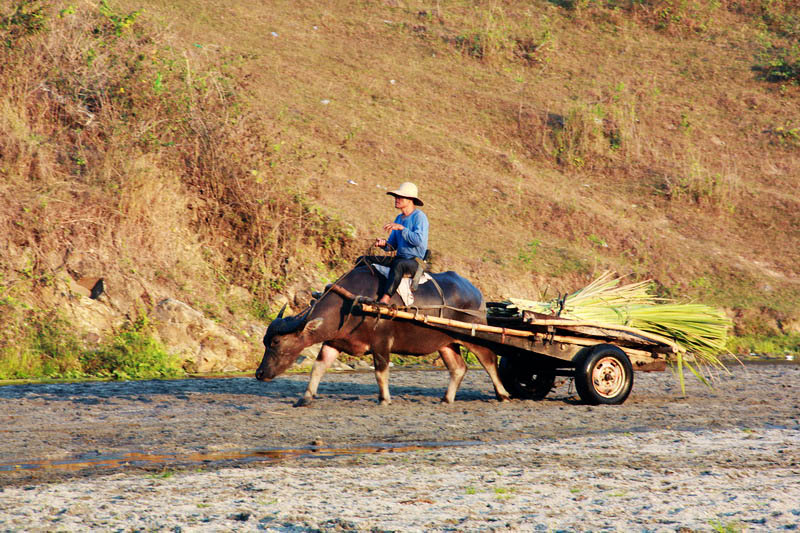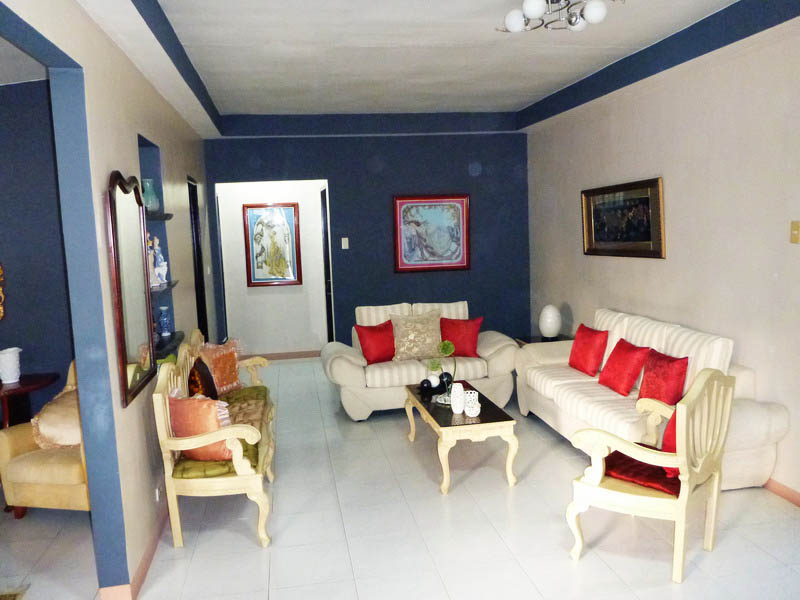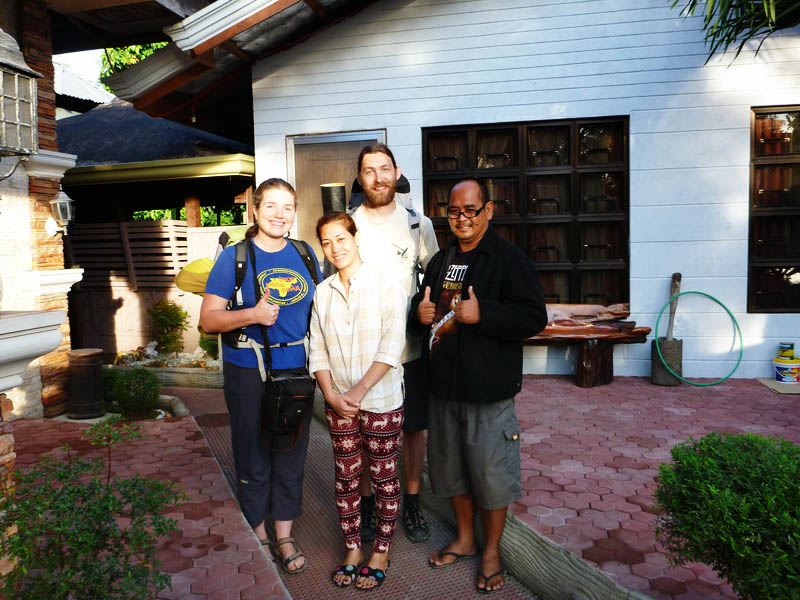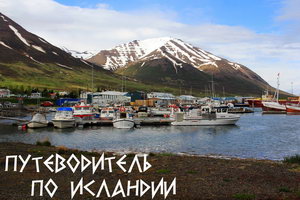We are in our half-year trip through Asia and now we are just arrived to Philippines
Cebu greeted us with coolness in the airport building and a medical check at the exit of the plane, we had to fill out a special questionnaire indicating whether you were sick with Ebola (where you were, with whom you communicated, if you were unwell).
- Beginning of journey
- Whale shark snorkeling on Philippines
- Chocolate hills and tarsier reserve on Bohol island
- Trip to Balicasag island from Panglao
- Mayon volcano
- Surfing on Catanduanese Island
- The road from Legazpi to Manila and beyond...
- Lake in the crater of the Pinatubo volcano
- Manila is a city of contrasts
Beginning of journey
When we went outside, we immediately realised that we were in the tropics - the heat and humid air...
We tried to figure out how to get to our village - Tan-Awan, everyone is sent by taxi, after some research it turned out that we need to go through half the city to the southern car terminal (with which they do not understand bus station, but call it bus terminal) by jeepney with three transfers. We were not ready for this, so we took an inexpensive taxi for 250 thousand tugriks - pesos. The traffic on the streets is chaotic, there are a lot of mopeds, two- and three-wheeled, on the way our taxi almost ran over a couple of mopeds, in a word, Asia...
We had to drive with a lot of turns, through a bunch of districts and for about half an hour, so by the middle of the trip we realized that we had not lost by choosing a taxi.
They found their bus at the bus station pretty quickly and there were 100 people in line for it! But as it turned out, the buses leave almost every 10 minutes and after standing for about 15-20 minutes we were already on the bus. When we asked the locals where our bus was, we were asked for a regular or superior bus. We chose a regular one - it turned out to be a great bus with about 50 seats, modern, with air conditioning and free Wi-Fi.
The village of Tan-Awan is only 124 km away and judging by other people's reports, it takes about 2 hours to drive... But it turned out that everything was not so simple along the whole road there are towns, villages or just houses and again a lot of motor vehicles and pedestrians, and there are almost no sidewalks. So our bus drove all the way, then accelerating, then stopping. The journey took 4.5 hours. And people were constantly getting on the bus with all sorts of Filipino snacks, which they sold on the bus and got off. We tried one of them - something like rice kazinak. And the bus stopped for people to go to the toilet and once more to stock up in the store. There is a constant smell of snacks on the bus, the rustle of packaging and champing... Besides us, there were a couple of Dutch people on the bus, all the others were natives.
All the way, we couldn't stop marveling at the local flavor - palm trees with coconuts and bananas along the road, homemade motorcycle and bicycle carts.
That's how we got to our village in the dark. We were worried on the bus about how we would look for housing, but we were dropped off right near the local center and a local citizen immediately appeared at the bus signal from the hotel, who said that there were no empty seats... But he went with us to look for housing in other places, after a couple of questions and connecting a couple more people passing by, they found us a place in a wooden hut, almost on the seashore. Just next to the place where the boats sail to the whale sharks, and not at all expensive (350 pesos from the bow). True, the walls are made of some kind of bamboo woven fibers and the door is made of plywood, but there is a fan and an outlet.
We had dinner right there in the cafe with grilled fish and spicy stew. So that's how the first day in the Philippines ended. After a bottle of local beer, the first shock began to fade a little.
Whale shark snorkeling on Philippines
Today we realised one of our great expectations from the trip - we swam with whale sharks in the Philippines. Sharks are protected by the state and the "attraction" with them is strictly limited - at 6 a.m. the beginning and up to 12 p.m. maximum. But of course it's better in the morning and not on a day off. Today is Monday, although there are a lot of people, but still much less than yesterday. First, the instruction: do not touch the shark, do not feed it, do not take it off with a flash, etc.
And then you pay 1000 pesos for snorkeling and it seems 1500 for diving with sharks, you can also just watch from the boat, but it doesn't seem interesting to me at all... We swam with masks like most. As soon as we sailed to the place where the sharks were already being fed, I was the first from our boat to plunge into the water, just put on a mask and looked under the water and immediately saw a shark - a giant body, dark with light, almost white spots, a huge muzzle and an even larger tail fin sailed past.
In general, in the allotted 20 minutes, I managed to see sharks many times, and once I swim, look at the shark on the right, look away and see the shark on the left, which swims parallel. The feeling of floating between these two hulks is simply incredible!
Sharks are given food from small single-person boats and it draws in food along with a huge volume of water, which it then pumps out. But when she swims towards you with her mouth open, you want to get out of her way as soon as possible.
In general, the impressions are only the best. The event is definitely worth a try. It is a pity, of course, that time is so limited, I would like to swim with these giants longer...
Chocolate hills and tarsier reserve on Bohol island
While we are sailing on the Cebu - Ormoc ferry between the islands in the Philippines, there is time to write how we spent the first days of the new year 2015.
In order not to waste time, on the first of January we decided to visit the sights of Bohol, yes, right at 8 a.m. on January 1st. In fact, there are two excursions on Panglao, SeaTour and LandTour. We decided to start with the sights on the island itself.
We have agreed on a group excursion to the main attractions of this Philippine island - tarsiers and chocolate hills. The cost of the tour is 400 pesos ($ 9), but this amount does not include the entrance fee to the attractions (an old Filipino tradition), and sometimes it is a very considerable fee.
On the way to these main attractions, we visited the monument, which is located at the site of the signing of peace between the natives of Bohol and the Spanish expedition of Magellan. As always, the peace did not last long, and soon Magellan moved to another island, Cebu, where he died in a battle with not so accommodating natives. Then we were driven to the ruins of a Spanish church from the time of colonization. A little further away there was a huge python Prony and a transvestite guide, the hero of the program "Phillipines may have talent" - all these places do not deserve special attention and you can not go to them.
The next point of our excursion was rafting on the Lobok River on a floating restaurant - the prices for a buffet lunch are high by local standards (400 pesos ($9)), but it's also sad to hang around the car for an hour. Unfortunately, it is impossible to visit a river cruise without visiting a restaurant... The river itself is dirty, but the banks and straits look very cool, and we also saw a local eagle! At the farthest point, the ship docks on the shore and there is an opportunity to visit the reconstruction of the native village.The natives turned out to be well-fed and peaceful, so all the tourists returned safely to the floating restaurant.
And then there was a gorgeous place for extreme sports fans - zipline. And in Russian, it's just a cable stretched over a canyon with a river, on which you are suspended and you roll to the other side. The cost of the event is 350 pesos ($8) per round trip. I liked it on the zipline, but not enough...
Then there was one of the peaks of our excursion program - tarsiers (in the local pronunciation of tarshiers) or, in our opinion, tarsiers. Small nocturnal and very cute animals. It is almost impossible to find them yourself in the forest. And here, in a small area, they were planted so that they could be observed and photographed.
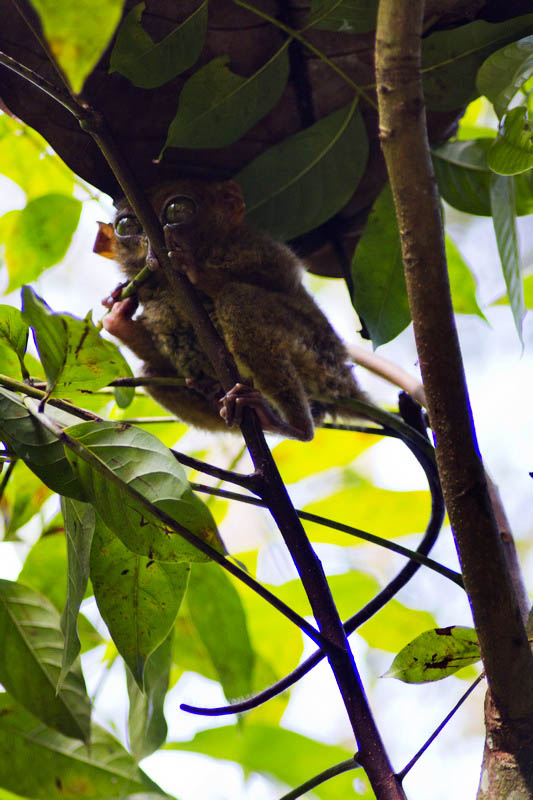
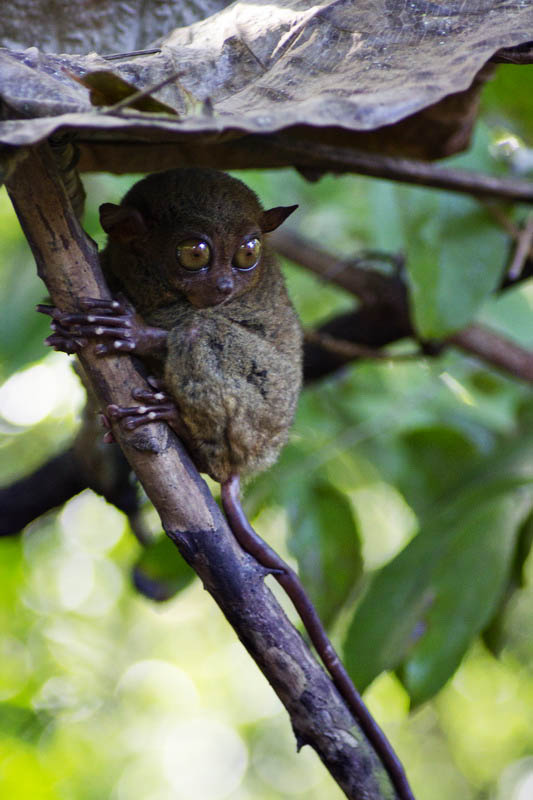
The entire Dolgopyatov nature reserve is a fenced piece of forest, along which paths are laid, but only one is allowed to walk. This trail is 1-1.5 km long. At the beginning, when tourists enter the trail, they turn their heads in search of small tarsiers in the trees. And they still can't find it... And then a crowd of people appears from behind the trees, screaming and scurrying back and forth. Everyone points their fingers in different directions, indicating where the tarsiers are glued to the branches. And of course everyone is trying to take pictures of them.
Tarsiers sit under large burdocks, because the animal is nocturnal, and if it does not create at least some semblance of twilight, then it will always sleep during the day. And tourists are eager to see the big eyes of the tarsiers open.
A whole infrastructure has grown up around this reserve from parking lots, cafes and a bunch of stalls selling cheap Chinese souvenirs, of course in the form of tarsiers.
On the way to the chocolate hills, we passed through villages that were affected by the last typhoon on December 30, this is the one that kept us in Tan Awan for three days because the ferries did not run and the road was blocked with palm trees. Bridges have been demolished, there are a lot of landslides and along the entire road, locals are drying household utensils and clothes, because their houses were flooded with water and mud.
And finally the chocolate hills! The entrance to the parking lot, from where the path to the observation deck begins, costs 50 pesos ($ 1.2). And then the climb to the observation deck itself is quite large. There are views of the chocolate hills from above, all the way to the horizon. It is a very unusual sight - a lot of hills similar to each other like brothers. They look especially beautiful in the rays of the setting sun.
The first question that is asked to the guide is: "Why are the hills called chocolate?". The answer to it is: the hills are covered with green grass, which changes its color to brown during the dry season, hence the name of the hills (and Wikipedia fully agrees with it).
But unfortunately, it's time for us to take one last look at the chocolate hills and drive back.
And then there was the way to the hotel, along a road surrounded by rice fields.
Trip to Balicasag island from Panglao
The tourist islands of Bohol and Panglao and the sights in the area, this time it is Balikasag Island, and the program includes snorkeling and schools of dolphins!
We already wrote earlier about the Land Tour (Chocolate Hills, tarshiers, rafting on the Lobok River and other attractions of Bohol), and now it's time to write about the Sea Tour. This is an excursion from Panglao Island, where the famous Alona Beach is located, to the neighboring small island of Balicasag and starts at 6 am.
But such an early start is just for the sake of seeing dolphins. And we've seen them more than once. The pack was quite large and they were constantly surfacing here and there... Escaping from boats with tourists.
The next item on the program was Balikasag Island. On it you can swim among the corals with a lot of fish and snorkel in the hope of seeing a sea turtle. As usual in the Philippines, you will be offered to take you by boat to snorkeling spots, which is 40-50 meters from the shore, for an additional fee of 150-200 pesos (1.5-2 $) and this is for one place. When asked if we can swim ourselves, they will make round eyes and say that it is forbidden. Don't believe it - you're just being bred for money!
You put on a mask with a tube and go ahead - no one will say a word. We weren't very lucky with the turtles, maybe we were just in the wrong place, but Pasha was lucky enough to see one. But we have both seen enough fish, with a large number and variety. The most interesting thing is that the gently sloping shore abruptly ends somewhere 20-30 meters away. And there are a lot of different beauties on this border: corals and fish - from small things to quite impressive specimens of 30-40 centimeters each. This place is also called the Fish Sanctuary. And it is located just in the place where most boats dock.
And after snorkeling in Balicasaga, you will visit Virgin Island. The island itself is a small sand spit in the sea, but quite pretty. And there are several religious sites on it and something else is being built.
In general, after the tour, we realized that we had not gone in vain, but decided not to go diving to the island, since you can dive to the most beautiful places with a mask and snorkel, unless of course you can dive 5-6 meters.
Mayon volcano
Mayon volcano - it struck us even while preparing for the trip. An ideal cone rising more than 2000m above the surrounding terrain, almost on the ocean shore, is also active. In general, it was decided to try to climb it.
Especially for climbing the Mayon volcano, with a huge number of transfers by ferries, jeepneys, buses, we got from the island of Bohol to the city of Legazpi.And on the way to the town of Tagbilaran, they even managed to spend the night on the territory of the fire station.
We checked into the hotel, explored the area and visited the night bazaar cafe.
The next day, in the morning, we went to the foot of the volcano by jeep, which goes to the village of Buayan. Leaving the church on the new road under construction, we begin the journey. The new road stops quickly and the usual primer begins. And on the way there are locals with buffaloes...
After a while we enter the jungle. Coconut palms grow in abundance around, and we extract coconut from one of them, not without difficulty. Coconut milk is clear and cool and quenches thirst perfectly.
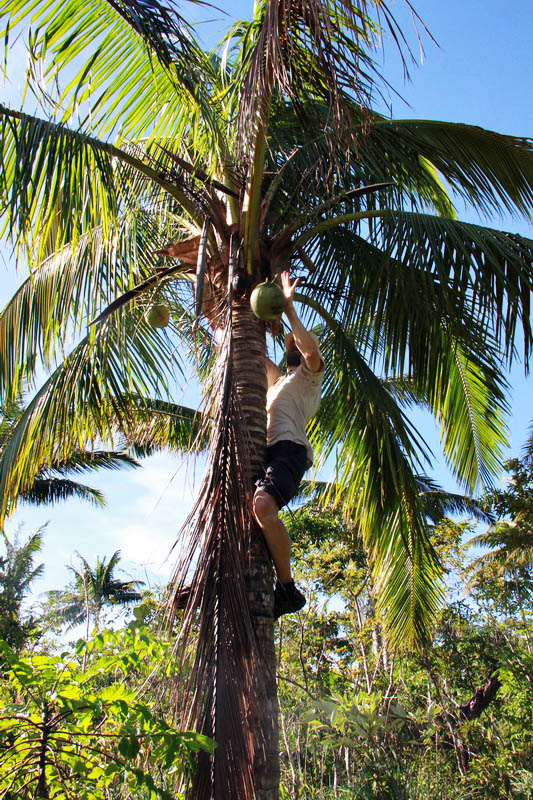
We climb higher along the path through the jungle. The trail winds higher and higher. We go out to a section of burnt-out forest, after a recent eruption. And we understand that something is wrong here - there was no such thing in the description.
A woodcutter's axe could be heard in the forest. A local native was felling wood for the hearth. With the help of gestures, English and some kind of mother, we explained what we needed to go to camp one (this is such an intermediate camp when climbing). The woodcutter waved his hand and we realized everything was gone. To be more precise, we wandered through the jungle in the wrong place. I had to go back and look for another path.
After wandering along the trails in the jungle for a couple more hours and all this in the infernal heat and humidity, we miraculously got to the right place. Namely, the old lava flow, located in a fairly deep gorge. After the rains, a rapid stream of water flows through this gorge, which washed picturesque channels and baths in the lava. Some of the baths had the purest water, which beckoned to swim, which we did not hesitate to do. After leaving the stuffy jungle, bathing in the refreshing font was especially pleasant.
Then we went up the canyon. The canyon walls gradually became steeper and higher, and on the way we encountered rocky rapids and ledges, which we bypassed through the jungle or climbed over rocks. Clear layers of multicolored rocks could be seen on the walls, but it all looked very fragile. It seems that after every downpour or typhoon, landslides and rockfalls occur, and the relief of the canyon is constantly changing. At the bottom of the canyon, placers of huge stones alternate with frozen lava smooth as asphalt.
The canyon went higher and higher up the slope of the volcano and we went with it. When we reached the next ledge, we realized that it was time to get out of the canyon, because it was getting close to evening, and it was too dangerous to stay in it overnight. Even after a light rain, all the water drains into the canyon and forms a stormy stream, carrying rocks down and washing away the banks.
Having barely got out of the canyon through a crack in one of the walls, we found ourselves on an old lava flow, which is an endless scattering of very sharp stones, where it is difficult to find a flat area. This stream has already managed to grow grass and trees in some places. Having found the only flat and relatively safe area on the volcanic sand, we stayed there overnight.
All evening we made plans for further ascent, and in between we photographed the sunset and the night Legazpi.
But at two o'clock in the morning we were woken up by a strong wind and rain. The chances of climbing were fading with every drop. We began to worry that we would not be washed away by streams of water or mud. We packed up as much as possible and anxiously waited for the morning in the tent. Periodically, the rain increased and decreased. And we regularly checked to see if we were being tempted. But, fortunately, morning came, and our RedPoint tent was in place.
The rain continued, there were no gaps anywhere and we realized that it was time to go down. Reconnaissance showed that we will not be able to pass through yesterday's canyon - a stormy stream of water flows down it. And we decided to go down the rocky lava flow. It was hard to walk on it, especially in the rain. But we still went down to its base and came out on a patch of burnt forest overgrown with grass. Soon we came out on the trail, the rain was almost over, but a black cloud was still swirling over the volcano.
The trail led us into a familiar canyon, fortunately, the water level had already dropped and we were able to continue down the canyon. When we went out to our favorite baths, the sun came out into the sky at all, and we laid out a soaked tent and things on warm stones. We continued our descent along the already familiar path, stopping periodically to drink coconut milk and eat pulp, which greatly slowed down our descent.
Still not understanding where we lost our way on the ascent, we came to its beginning near the church. Going down through the village, we found special activity in the rice fields - it had just rained...
There was still time before evening and we went to the ocean shore with a gorgeous black sand beach and huge ocean waves. The top of the volcano was still covered with clouds, but we admired the most beautiful sunset over the jungle.
Surfing on Catanduanese Island
We decided to go to the island of Catanduanes spontaneously, having read somewhere that you can try surfing there
You can get to Catanduanes from Legazpi by ferry, which runs from Tabaco Port. At first we tried to find this port in Legazpi, but we failed - it turned out that we still have to go 40-50 km to it. The locals told us that the ferry was at 9 a.m. and we left the house with a clear conscience at 6 a.m.
We wanted to ride a tricycle, but the price of 250 pesos was not happy, and there was still no jeep. As it turned out, they temporarily changed the route and they still have to drive a little bit. In general, we arrived at the Tabaco port almost at 8 o'clock. We still believed that we would leave in 1 hour. But... It turned out that the morning ferry leaves at 7, there is another one at 8-9 o'clock, but only during the season. And we have to wait for the ferry at 13. But we walked around Tabaco - a very nice town. We walked around the local mall, the market.
With a delay of 1 hour, the ferry sailed. Such discrepancies in the schedule and reality should be treated philosophically here.We sailed at low tide and all the unsightliness of the shore was exposed, and children and adults were rummaging through this garbage looking for something only they knew...
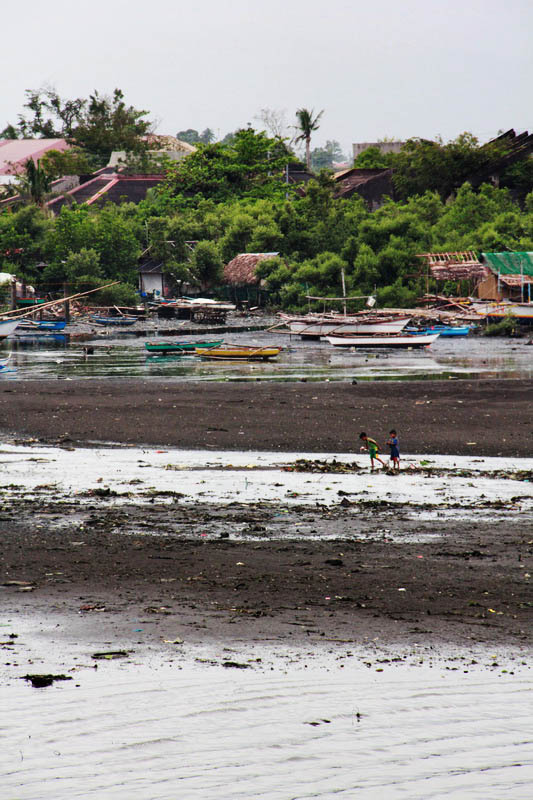
Three hours by ferry and we're in San Andreas. Judging by the descriptions on the Internet, there are a lot of surf schools on every beach, just choose. While we were trying to find out what was here and how the jeepneys were allowed to enter the neighboring town of Virac... In general, after 20 minutes of proceedings, it turned out that the famous surfer place Puraran is the only one on the whole island.
It is not possible to stay overnight in San Andreas at first glance, and we are going to Virac on a tricycle. In Virac, a tricyclist is trying to sell us the most expensive hotel and cheat us with payment - he tried to take 300, not 200 pesos as agreed. In general, the second Internet story that absolutely disinterested people in Catanduanes crumbled to smithereens.
After several attempts, we found a Chinese hotel inexpensive and with normal conditions.
And in the morning we took a jeep to Baras. This is a town that is only 6-7 km from Puraran. We shared the tricycle fee with a local woman and we are on the spot.
A large sandy beach, bungalows, palm trees and an ocean with huge waves crashing against the coastal cliffs. An idyll...
The cost of the bungalow was pleasantly pleased, although the walls are thatched, but the bathroom is tiled, the cost of the bungalow is 400 php.
After talking with the hostess Irene, we understand that it's not the season, but you can try surfing, but you have to wait for the tide. And so, after a snork and a walk, we waited. We have a couple of boards and a couple of instructors. Later I will understand that these are just locals who can skate, but for now we are trying to understand each other, because their English is very bad. The first waves on the surf, the first attempts to make a stand up. It is interesting and exciting. An hour passed unnoticed.
It was interesting to try and I think it won't be the last time, but in surfing you row more than you ride... Or we just don't know something else. And the next day we surfed in the morning, and then we took a motorbike, according to our moped. Of course, driving it is very different from driving a normal motorcycle, but you get used to it quickly.
Along local roads, which are sometimes simply washed away by another typhoon, and sometimes are still under construction, we reached the village of Gigmoto. And from it to the waterfall.
The waterfall is large, with three steps. The largest average is about 30 meters, no less. And since it's Sunday, there were local kids at the waterfall. Looking at them, we found out where and where to jump from. And Paha went to jump. The water is warm, the bath where you jump is deep - all conditions!
Having had a lot of fun, we set off on our way back. The road is winding and at every turn there are more and more new beauties - the ocean, islands, bays, endlessly rolling waves, lush greenery and buffaloes on rice plantations.
In the evening, we fortified ourselves with freshly caught lobsters with Filipino rum. The third Internet story about delicious Catanduanese rum turned out to be true, but rum is not from this island, but is sold everywhere in the Philippines. It's late, it's time to go to bed, tomorrow we will go to Legazpi.
The result is this: the island is very beautiful and attractive, if you are interested in a quiet vacation close to nature, then you are here. However, the complicated logistics of getting there spoils everything. So the best option is a direct flight from Manila to Virac at promotional prices :-)
Pricing information:
Jeepney from Legazpi to Tabaco Port 25 pesos ($0.6)
Tabaco Port SanAndreas Ferry (Catanduanes) 220 pesos ($4.9)
Tricycle SanAndreas Virac 200 pesos ($4.5)
Jeepney Virac Bars 35 pesos ($0.8)
Tricycle Baras Puraran 150 pesos (3.4$), but it's really cheaper to find fellow travelers
Accommodation in Puroran right next to the beach from 400 pesos ($9) per room for two in off-season
Dinner of a couple of dishes without alcohol 150-200 (3-4.5$) pesos per person
Moped rental 500 pesos per day ($11.5)
An hour of surfing with an instructor 350 pesos ($8)
The road from Legazpi to Manila and beyond...
Having had a great rest in peace and quiet on the island of Catanduanes, enjoying its picturesque nature, we gathered the will into a fist and prepared to move to the most populous city in the world - Manila. When we first arrived in the Philippines, we came to the city of Cebu, which shocked us, but it is called "little Manila". Therefore, we were preparing for the worst, although this time we had to visit it only passing through because we are going towards the Pinatubo volcano.
Everything looked simple from Legazpi, we easily took tickets for a comfortable night bus to Manila. According to an old Filipino tradition, they took snacks on the bus. And according to the experience of moving in air-conditioned buses, they left warm clothes on top. The only thing we did not take into account was that the superior bus froze twice as hard there. We are used to the fact that condensation in buses collects from the inside of the windows, but here it is the opposite - from the outside. In general, our warm clothes were decidedly not enough, and this despite the fact that we were wearing fleece jackets, storm jackets and trousers. By the middle of the night, in order not to get sick at all, we plugged the hole of the air conditioner with curtains and were able to somehow fall asleep. The saying is "make a fool pray to God..."just about Filipinos and air conditioners.
In the morning, still in the dark, getting off the bus in Manila, we finally warmed up. Manila was very different from other cities in the presence of multi-storey buildings. Somehow, having extracted from the local police, the place of departure of the buses to Angeles, we began to look for it. After turning circles through the alleys of Manila, we finally came to the right place. As always, all the drivers tried to get us on the bus, claiming that he was going where we needed to go. If we objected, they assured us that we needed to go exactly where they were going. In addition, the local names of stops and towns may not match the names on Google maps.
In general, we found a bus that suits us... almost - he's going to the next village. The neighboring village turned out to be the outskirts of Angeles, we did not notice the border. According to reviews from the Internet, immediately upon arrival in Angeles, you are attacked by Pinatubo tour providers. We were waiting for them, but they still weren't there... But we decided to explore the area. It immediately caught my eye, quite a large number of Europeans and all aged men.
While waiting for the opening of travel agencies, we decided to take a walk. And we accidentally wandered into an interesting quarter - the whole quarter consists of bars, nightclubs with names like "Wild Orchid", "Lovely Dancers", "Mom and Girls", and the neon-lit signs are even more piquant. And all this is on the central pedestrian street. Then we suspected something was wrong, but decided to continue the search for the hotel. Posters at the reception that it is forbidden to settle with children confirmed our guesses. It seems that rich elderly Europeans come here to remember their youth.
After waiting for the opening of travel agencies, we asked about the prices for excursions to Pinatubo - we realized from the surprised faces that this type of vacation was unpopular here and we were charged space prices. After a sleepless night on the bus and a tedious trip to Angeles, we no longer knew what to wish for next, but gathering our willpower, we decided to make our way to Santa Juliana - the village closest to the volcano, from where jeeps on Pinatubo start. Even if there are no people, we will try to climb the volcano on foot and with a tent.
It took another 2.5 hours of time, 2 transfers with the final trip on a three-wheeled motorcycle clunker. By the end of the trip, we already hated all Filipino transportation. The driver of this motorcycle clunker, counting on a reward from the owner of the hotel, brought us directly to the courtyard of the villa. The owner of the villa, with an excellent, surprisingly, English, welcomed us cordially and after a little haggling we agreed on an acceptable price for a very good room with breakfast.
According to the owner of the villa, Allan, he will try very hard to find people for tomorrow's excursion to Pinatubo, so that it will not be so expensive. After sleeping for half a day after an exhausting journey, we enjoyed a delicious dinner with fruits and drinks.
And with the hope of tomorrow's excursion, we went to bed.
Cost Information:
- Legazpi-Manila bus 808 pesos
- Manila-Angeles bus regular 107, air-conditioned 139 pesos
- hotels in Angeles from 900p per room
- Angeles Capas Jeep (local) 35 pesos per person
- Jeepney Capas(local)-Capas (according to Google maps) 30 pesos per person
- tricycle Capas(Google maps)- Santa Juliana 60p for the whole tricycle
- The Allan & Irma hotel with breakfast, air conditioning, and amenities costs 600 pesos per person, but we bargained for 500 per person.
And some more photos about Philippine transport:
Lake in the crater of the Pinatubo volcano
Having barely reached the village of Santa Juliana, we wrote about this in a previous article, we stayed overnight at a local hotel, hoping that there would be at least a couple more people and we would be able to get to Pinatubo with an excursion. In addition, in the evening, the owner of the hotel, Allan, said that there might be two more people.
We woke up at dawn according to the Filipino tradition, we were immediately pleased that the people who were going on an excursion were going! We had breakfast and went to the gathering place in a good mood. And there... There are 30 jeeps, a bunch of guides and even more tourists. And all these people are going to the Pinatubo volcano! And everyone scared us with the lack of tourists and offered an individual tour. So, if everyone tells you that there are no tourists on Pinatubo, just come to Santa Juliana and approach the tourist office at 6-6:30, you will find it without problems by a bunch of jeeps. And there you can already join some incomplete group (5 tourists can fit in 1 jeep, i.e. any group with a number not exceeding 5 is suitable for you).
There are closed and open jeeps, we asked for an open one, it's much more interesting, but it's very dusty, and if it rains, it's dirty. A couple of minutes and we went to the volcano. At the end of the village, the jeeps leave the road and continue along the sandy and rocky floodplain of the river. Gradually, the river banks become higher and steeper. In several places, jeeps cross streams and small rivers.
On the way, the jeep stopped once to rest and take pictures, and at the same time to insure the neighboring jeeps at the crossing. The help of our jeep at the crossing came in handy.
And so we reached a place beyond which it is very difficult, almost impossible to go by jeep. This point changes every year, and it can change throughout the season - it all depends on how the road was washed out during the rainy season and to what point it was cleared. It was 5-6 km from the place where we got to the crater.
The trail runs along a dried-up riverbed in a deep canyon, sometimes you have to overcome a water flow, but most often there are stones or a log, and the guide helps you cross by supporting you by the hand.
In one place, the guide showed us a sulphurous warm stream, which he called a hot spring. The stones in the streams are covered with a red or green coating. In some places, this plaque is very thick and looks like medicinal mud, but this time we decided not to smear...
We followed the riverbed to the place where the ascent to the crater itself begins. According to the sign, we have to walk in 15 minutes. The trail runs along a rocky streambed, almost through the jungle.
Soon we came to the edge of the crater, from where the first fascinating view of the lake opened. Having bypassed the sign through the bushes that it is forbidden to walk further, we found ourselves on the shore of the lake. Unfortunately, swimming in it is now prohibited, under the pretext that there are no rescuers. And boating on the lake was banned...
The lake itself has a turquoise color that is constantly changing. The best view, in our opinion, is in the morning, when the sun is not yet high. The lake is surrounded by crater walls, in some places they are steep, in some they are crumbly, and in some places there is a gentle beach.
The guides do not allow you to go far from the beach, and the Europeans are being watched with double diligence. After wandering along the beach, we started having lunch like all tourists. Everyone has different lunches - they are usually organized by the travel agency that sold the tour, and the guide carries them upstairs and picks up the garbage. About 1.5 hours after us, Chinese tourists began to flock to the crater... There were more and more of them. They ate, chattered and took selfies - in general, they behaved like all the Chinese we met. It became uninteresting in the crater, and there was nothing to do on the beach for more than an hour, and then they wouldn't let go. And we set off on our way back.
On the way to the jeeps, we met people moving in both directions. And then there was the jeep ride back, even more dusty than to the volcano. We were covered with a thick, thick layer of chocolate dust. We are fine with our room and shower in Santa Juliana, and many still have a 3-4 hour journey to Manila. By the way, there are paid souls at the beginning of the village and in the jeep parking area - everyone earns as much as they can.
And after the shower, hostess Irma treated us to noodles with shrimp and vegetables, fruits and a cold drink. In the evening of the same day, we went to the river to look at the life of the aborigines.
The next morning we had to move to Manila...
Cost Information:
- Accommodation with a big breakfast at Allan and Irma's: 600 php, but you can bargain.
- Dinner at Allan and Irma's: 170 php, includes, in addition to the main course, fruits and drinks.
- Lunch from Allan in the crater of the volcano with you (includes 1 liter of water in addition to food): 200 php
- Jeep rental: 3500 php Guide (required to take): 500 php
- Entrance to the national park per person: 450 php
- If you do not have an individual tour, then 2000 php will be charged for everything about everything and this is from Santa Juliana.
And finally, a couple of photos of the hotel.
The living room of our hotel
With the owners of the hotel, Allan and Irma
Manila is a city of contrasts
Finally, we got to the capital of the Philippines, Manila, for more than an hour. Assuming that it will not be easy to find accommodation running around the city for a 10 million person, we booked a hostel on booking.com . And we did not lose, as the hostel cost us less than if we had arrived there without prior reservation.
On the first evening, we went for a walk through the new business district in Makati City and accidentally wandered into a slum, from which it is not so easy to find a way out. In general, Manila is a city of contrasts - new business centers made of glass are adjacent to one-story borderless slums... And multi-level road interchanges with homemade jeepneys and tricycles. People are also very different from a businessman in a brand new suit to barefoot dirty kids playing in the slums...
Unfortunately, our trip to Manila coincided with the Pope's visit to the Philippines, namely Manila. And our first attempt to walk around the city center failed miserably. All the streets in the center were packed with Filipinos and visitors who had the hope of seeing the pope alive, and on every corner they sold a lot of everything with a portrait of the pope and the attributes of the Catholic Church. I also remember that the Filipinos did not represent Jesus as an adult man, but as a child, and many people in the crowd could see a doll depicting the savior, the dolls were completely different, but the size up to 2 meters was amazing. It is worth noting that a few days later, flying to Malaysia, half of all the luggage on our plane were these dolls... Religious fervor could not cool down, even the rain that had been falling all day. But the sellers of ice cream and water were very upset about the lost profit that day.
The next day, Dad was leaving and we made a second attempt to get to the center of Manila. It was Monday and we were able to use the river tram from Guadalupe station to Intramuros (this tram does not work on Sundays). The views from the boat once again convinced that Ukraine is a very prosperous country. Multi-storey huts made of improvised materials and garbage were located along the banks, nearby adults caught fish for dinner, and children splashed in the river using garbage instead of water toys. And behind the huts, brand-new skyscrapers could be seen...
At one of the intermediate stations, a military man got on the boat and politely warned us not to take pictures while we were sailing past the palace... We did not understand whose palace it was, but we heeded the requests and did not take pictures.
The boat's final stop is right next to the historic Intromuros quarter. We immediately felt like we were in a tourist place, there was no end to offers from tricyclists to conduct an individual tour. The quarter consists of buildings built during the Spanish colonization. Fragments of the ancient fortress wall have also been preserved.
We also visited Fort Santiago. There is a pretty park around, but only the walls of the fort itself remain... Although it is very pleasant to walk there.
We wanted to visit Rizal Park, but it was closed for cleaning, because the night before there were crowds of people who wanted to see the pope. We saw only piles of garbage and trampled flower beds...
The embankment greeted us with sizzling heat and an absolute lack of shade. And we hid in the cool of the store, where we ate ice cream to recover.
To pass the time before the plane, we decided to go to the local zoo. The zoo was pleased with the shade and coolness, a good collection of birds and animals, but there were quite a lot of people...
We have the following opinion about Manila - there is nothing to do in the city for more than one day, of course, if you are not a fan of shopping. It is much better to spend time in a remote place, enjoying the nature of the Philippines.
Cost information:
River tram: 50 pesos
Fort Santiago: 25 pesos
Manila City Zoo: 100 pesos
Jeepneys in the city depend on the distance the price is 10-20 pesos
Our Awesome Hostel by pre-booking 400 pesos/bed, regular price 600 pesos/bed
The bus in the city is 10-25, depending on the distance and the availability of air conditioning
Skytrain from 10-25 pesos
A taxi by the meter, for example, from the Guadalupe station to the airport is about 200 pesos
and MOST IMPORTANTLY, at Manila airport (and other Philippine airports) there is an additional fee (terminal fee) in the amount of 550 pesos / person for international flights... According to the girl, you can pay with dollars or a bank card at the cash desk.
And finally, a list of "divorces" that we have encountered in the Philippines:
- Upon arrival in the town of Virac, the tricyclist tried to charge us a higher price than had been agreed in advance.
- Before climbing the Pinatubo volcano, everyone assured us that there were few tourists and tried to sell an individual tour. And in the morning, there were a lot of people near the starting point of the jeeps on the volcano.
- Additional fees are charged for everything that is possible: terminal fee upon boarding the ferry (even two fees in one place), terminal fee upon departure from the airport, entrance fee for visiting a floating restaurant on the Loboc River. Additional payment for all attractions during excursions, which everyone is silent about in advance. It would be more logical to include all this in the ticket price.
- On Baliсasaс Island, near Panglao, local natives assure that visiting the coral reef Fish sanctuary is possible only on their boats for an additional fee, although this place is located 20 meters from the shore. And we sailed there on our own without any problems, and no one objected to us.
- Children are trying to sell what they can take for free, for example, bamboo sticks, before climbing the Pinatubo volcano.
- When traveling, you should also not rely on assistants in the form of drivers - they will say that they are going where you need to go, and on the spot it turns out that 2-3 more transfers are required.
- Another feature of the Philippines is "Philippine time", which has nothing to do with normal time. EVERYTHING is ALWAYS late, it does not leave on time. The schedule almost never corresponds to reality. And even if a lot of people are already sitting in the transport, this does not mean that departure is coming soon, so you can sit for up to three hours. Therefore, all the moves are very tedious and take much longer than planned. It is always worth checking with the driver when he does leave...
- In the provinces (everywhere except Manila and Cebu), life freezes after dark - everything closes, transport stops running. But in the morning everything opens at dawn. Restaurants in resort towns can work until 22-23, but this is rather an exception...

